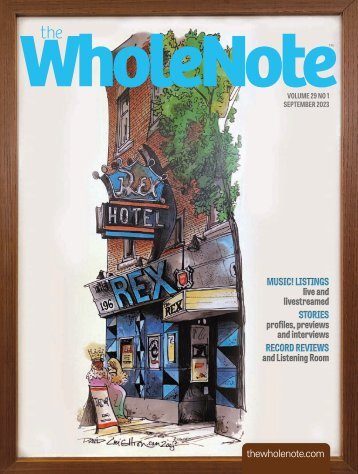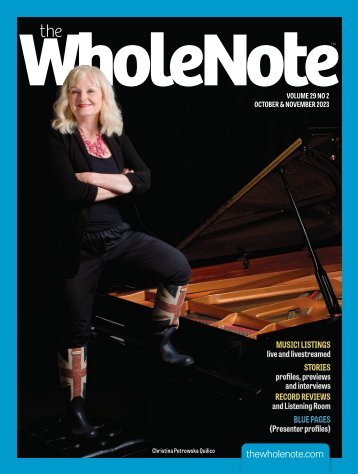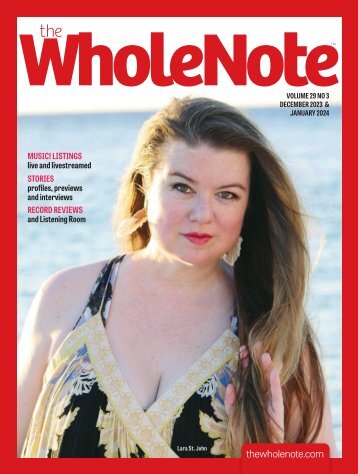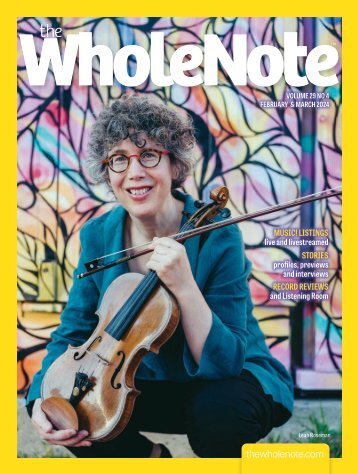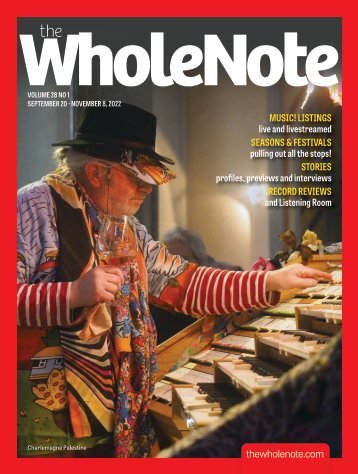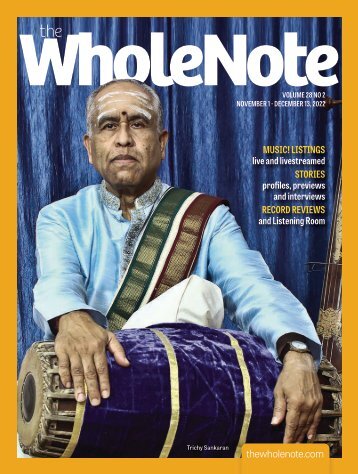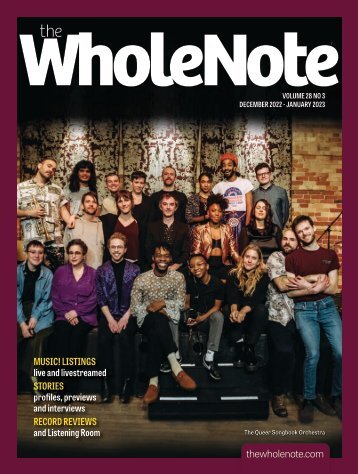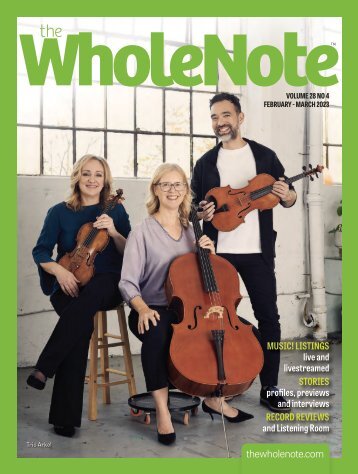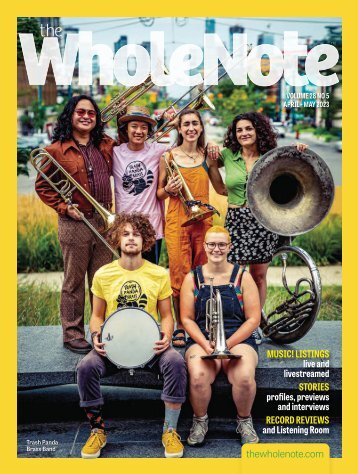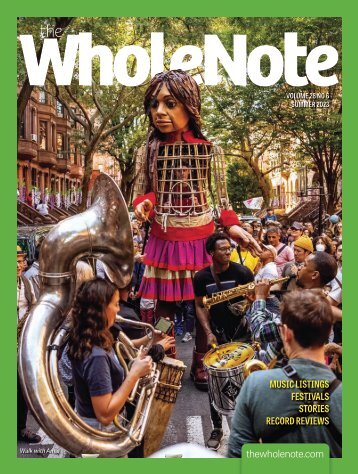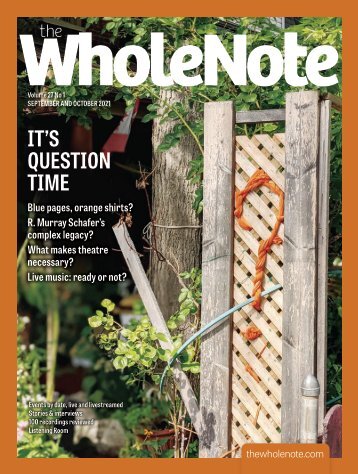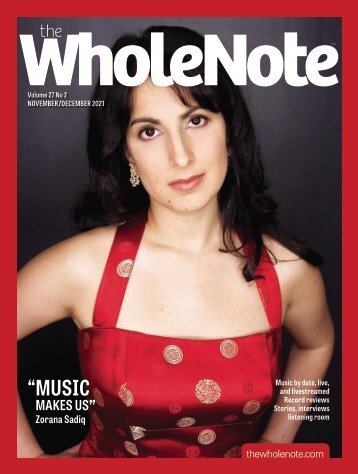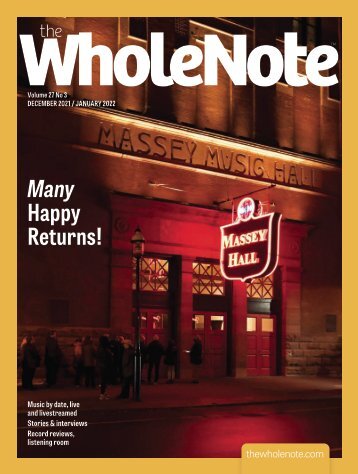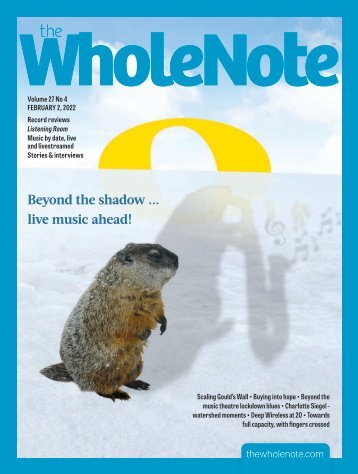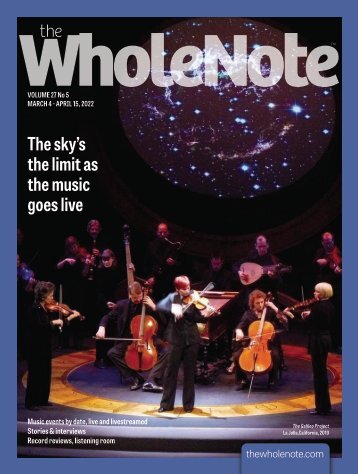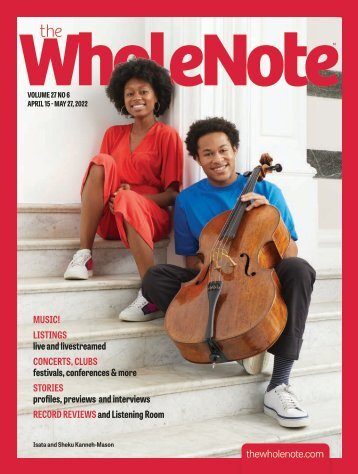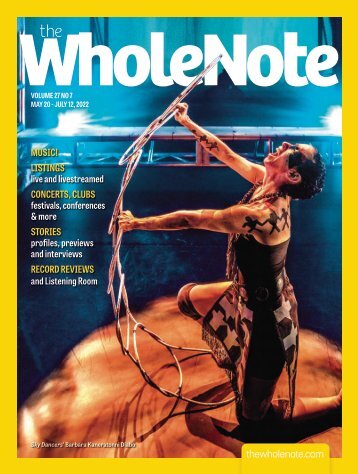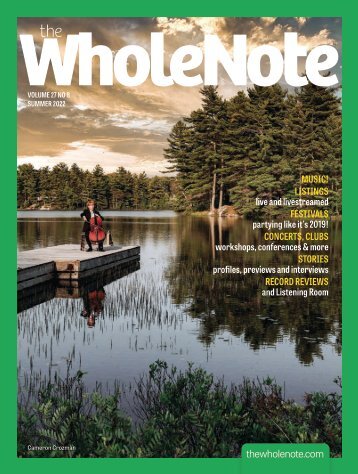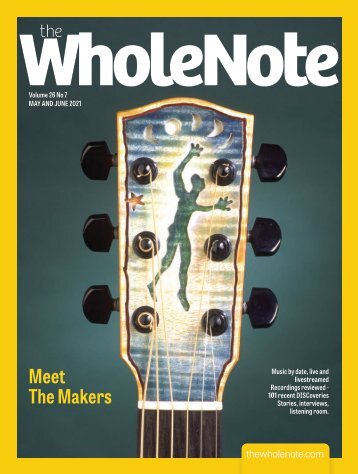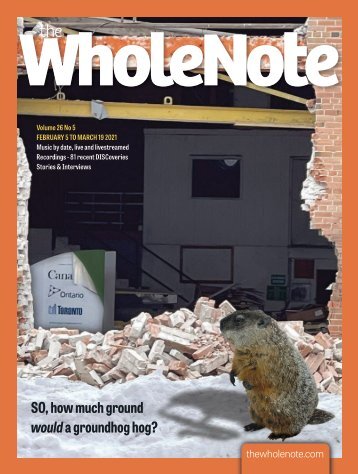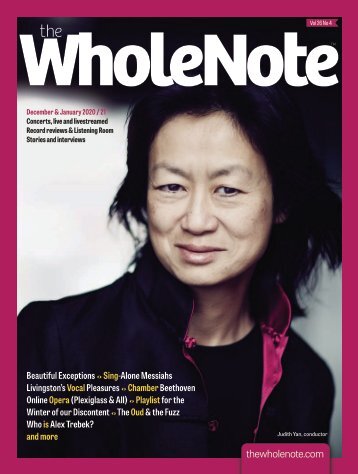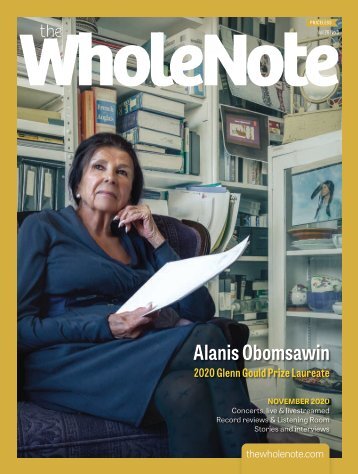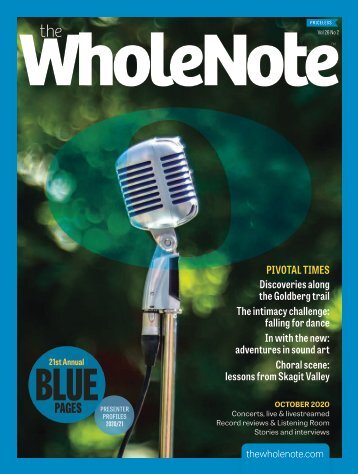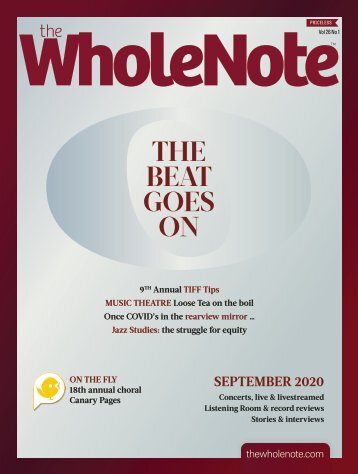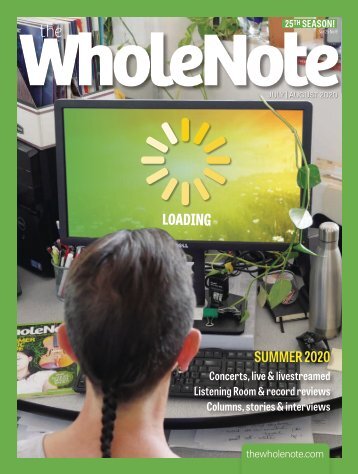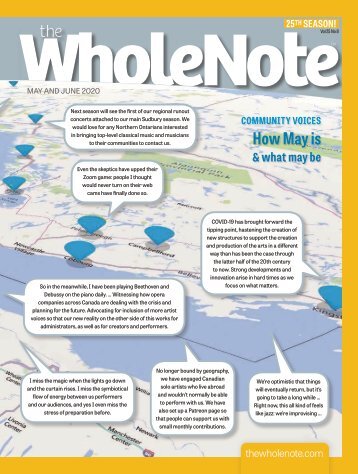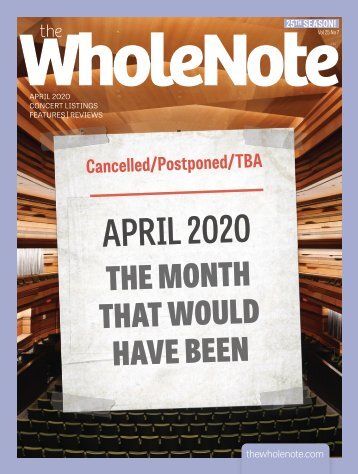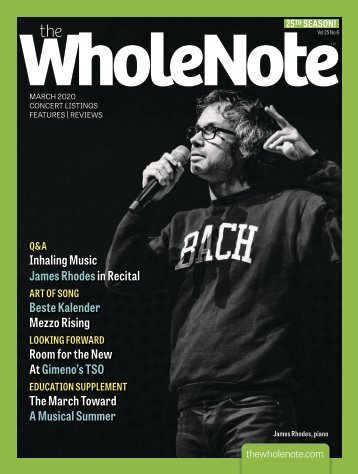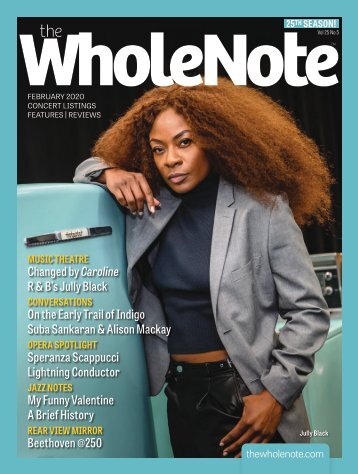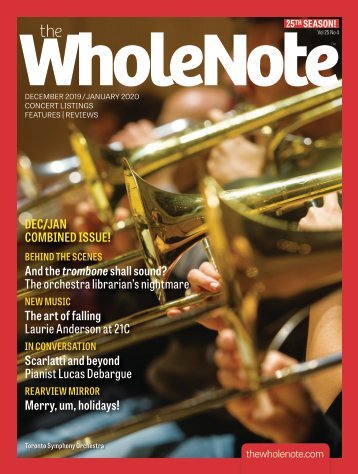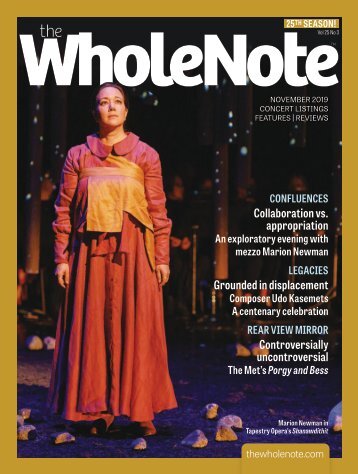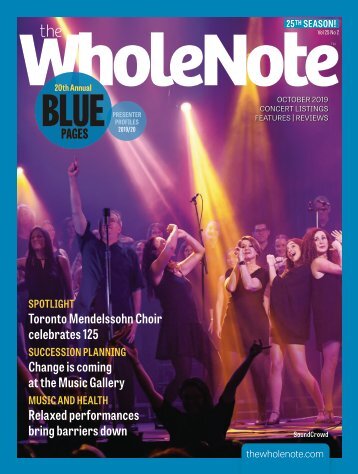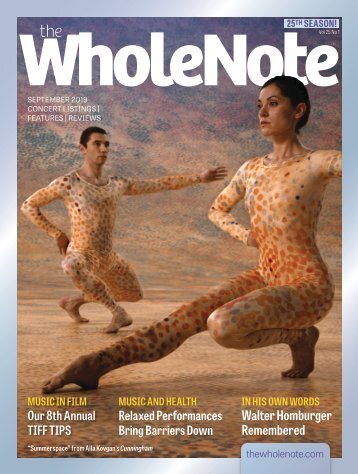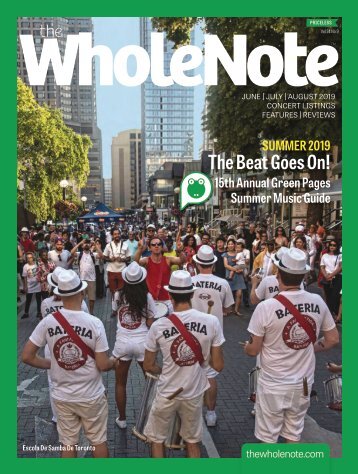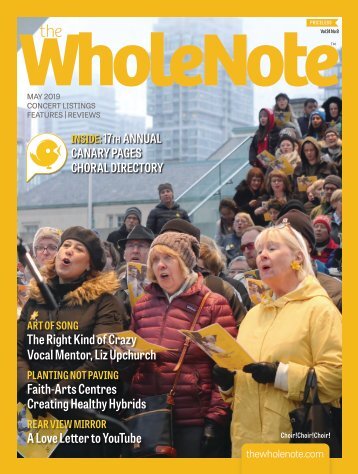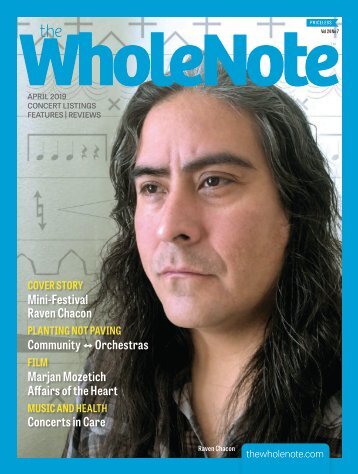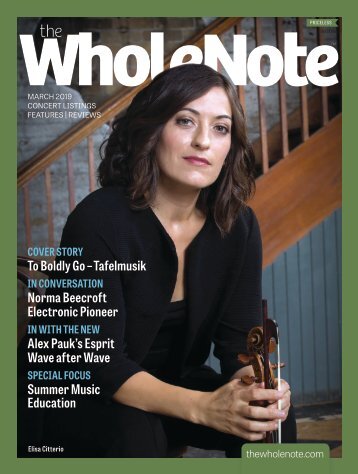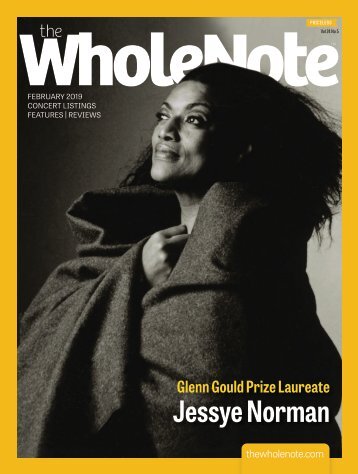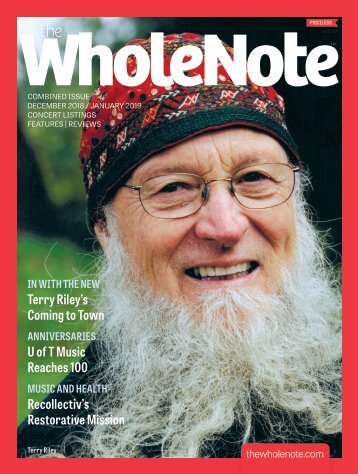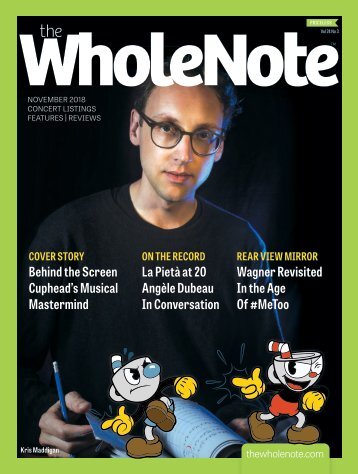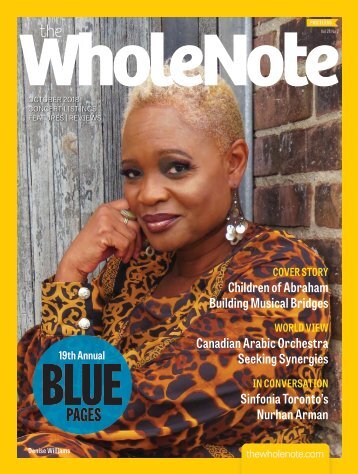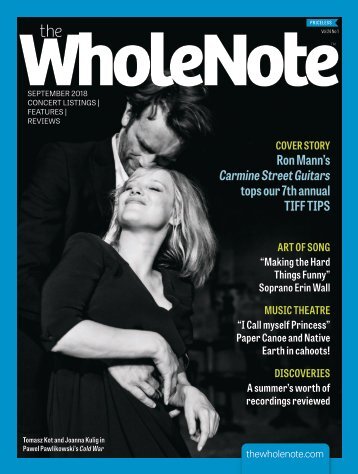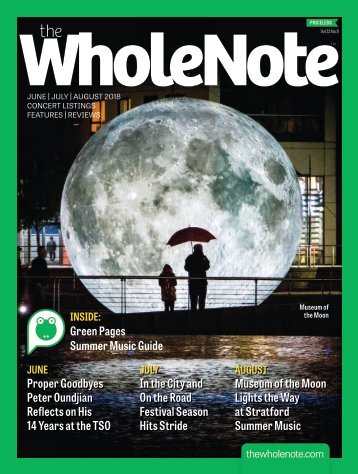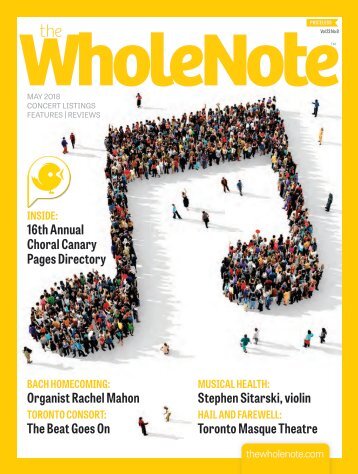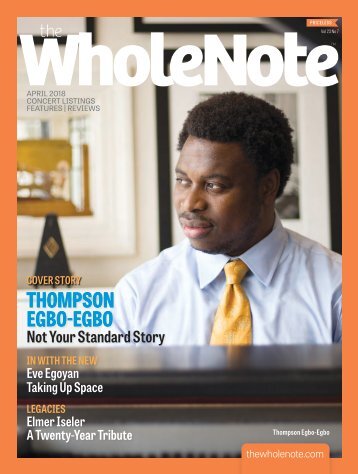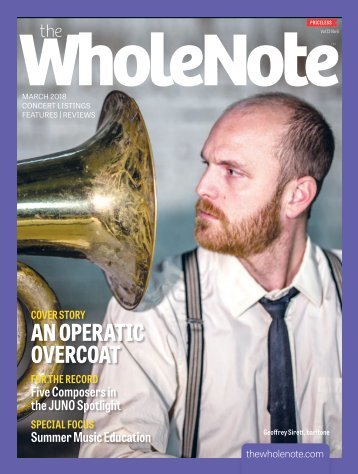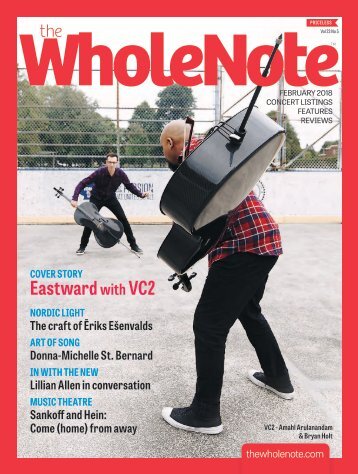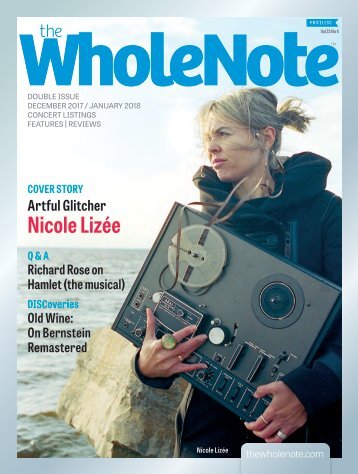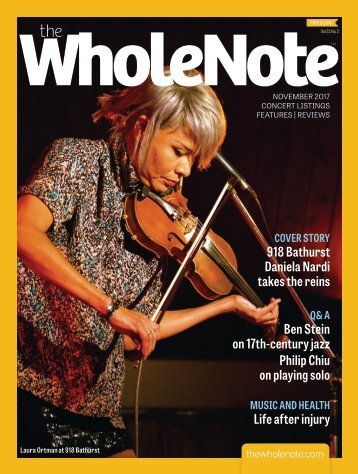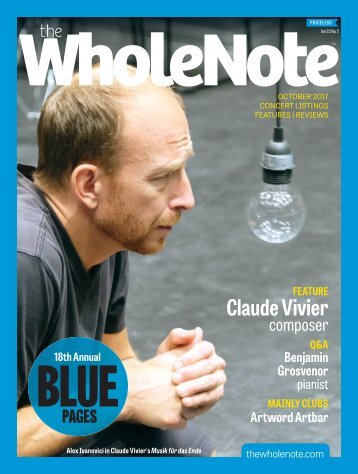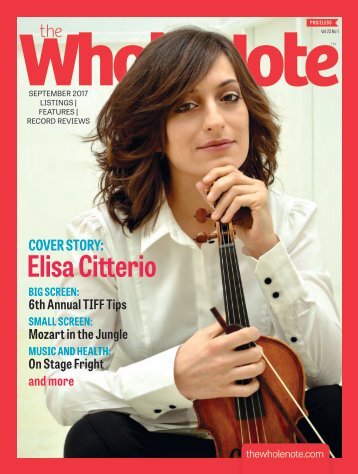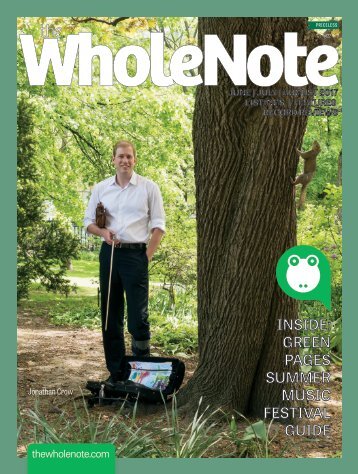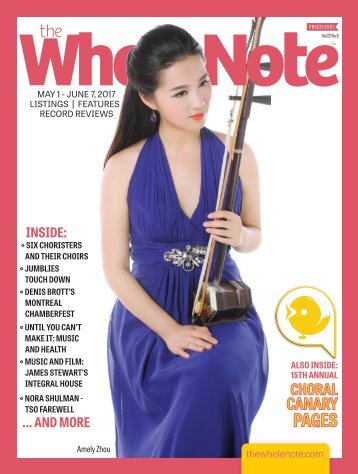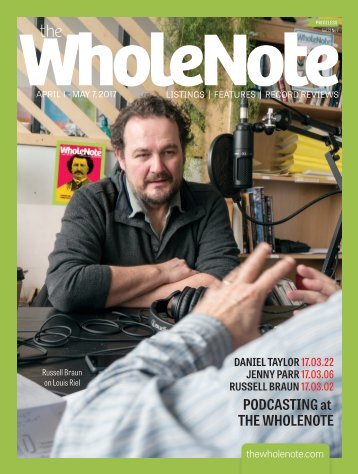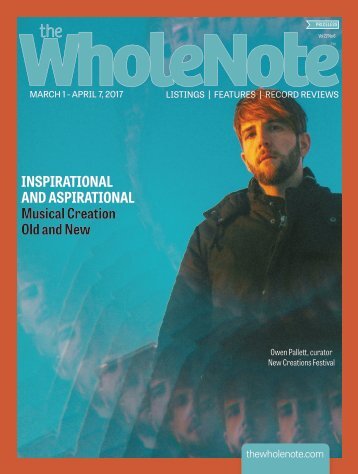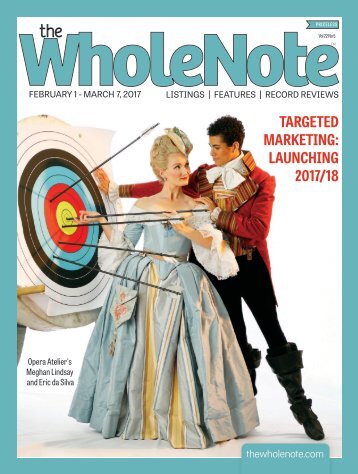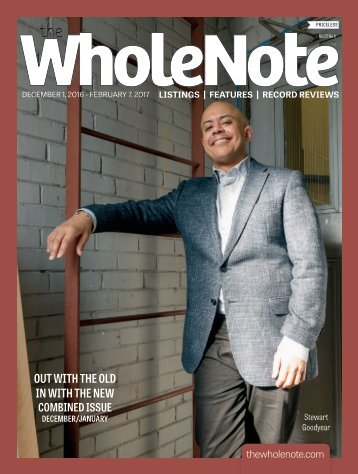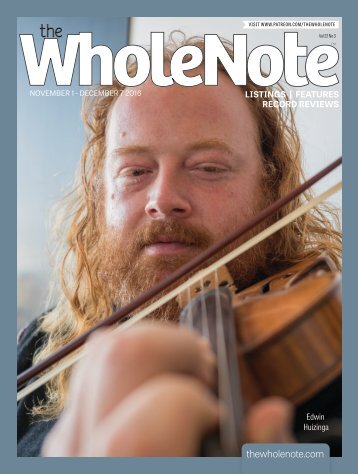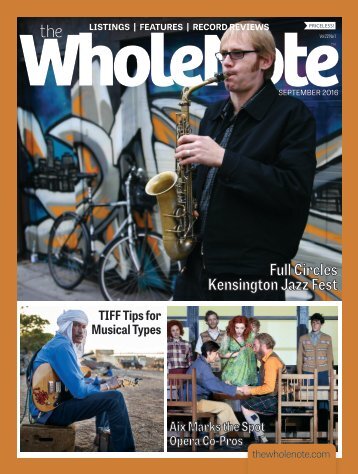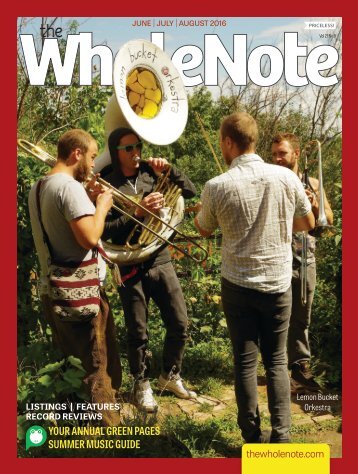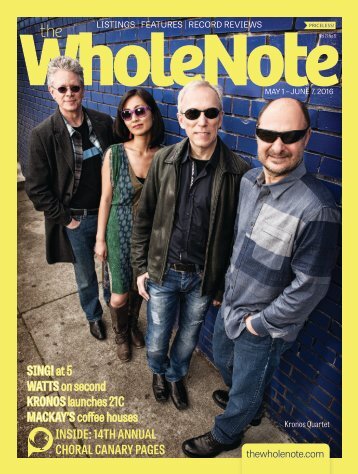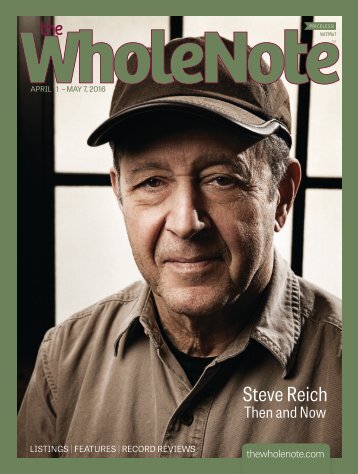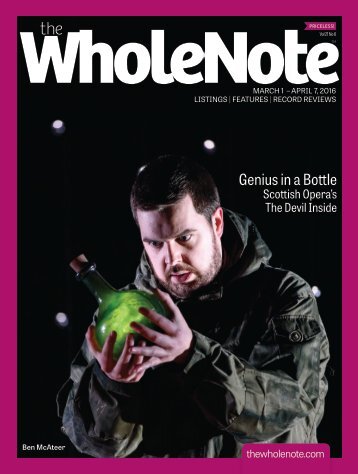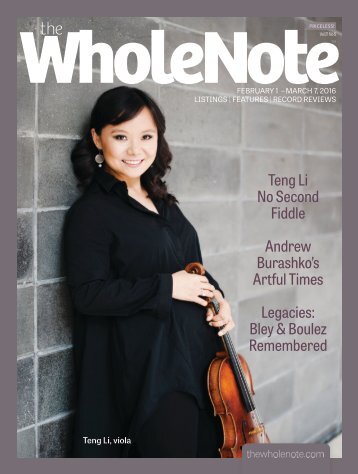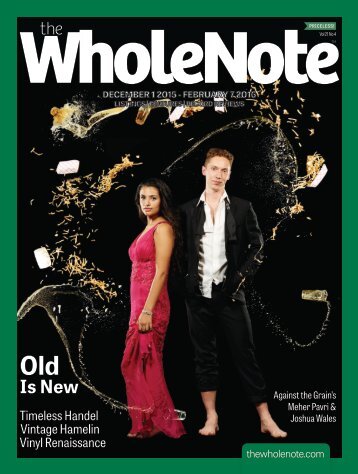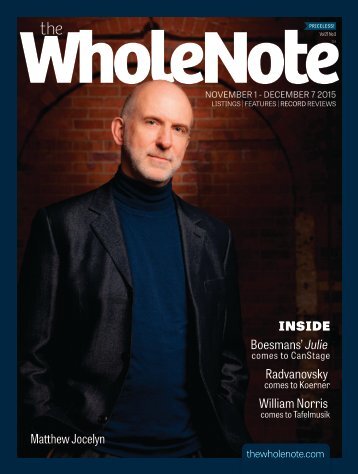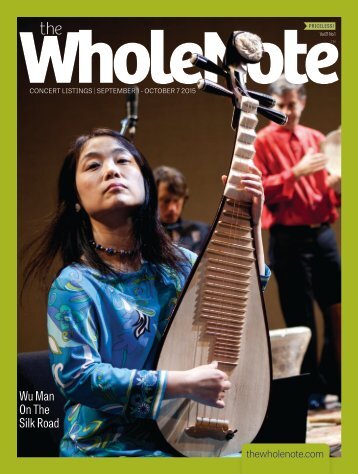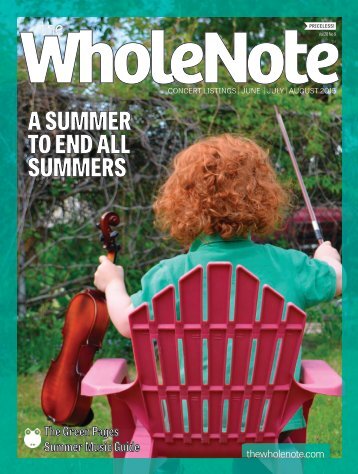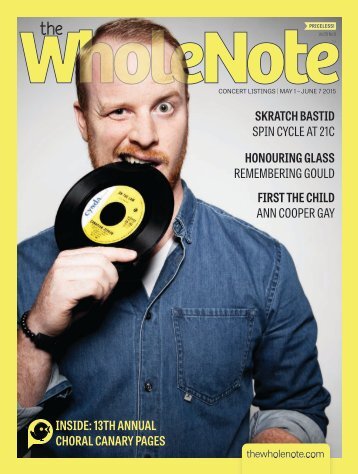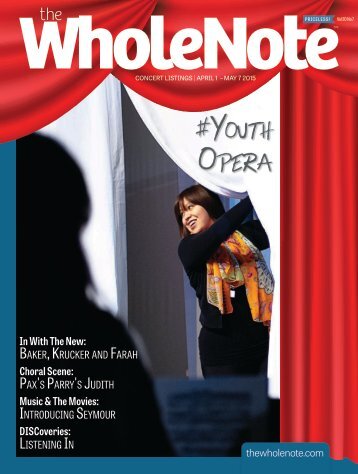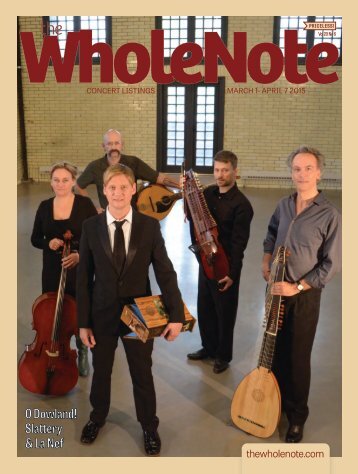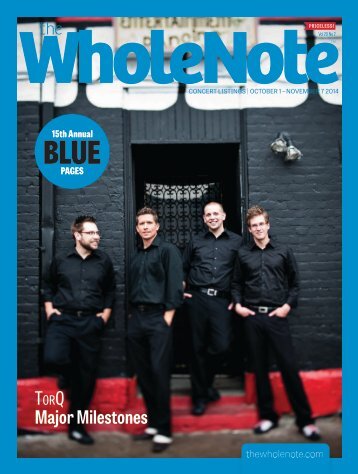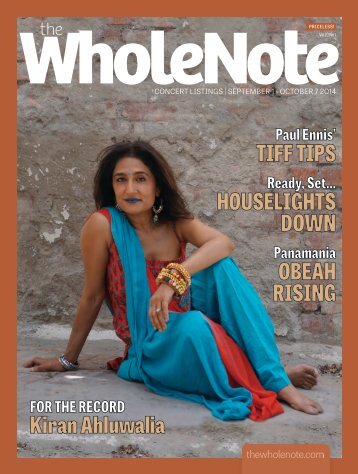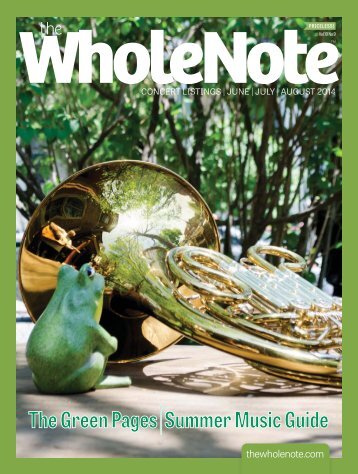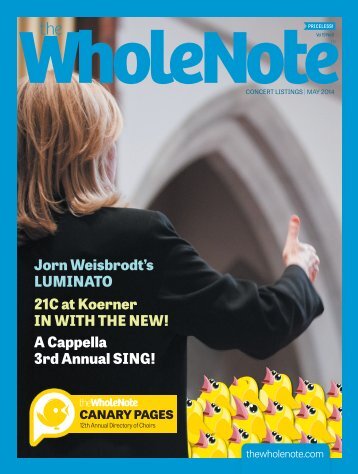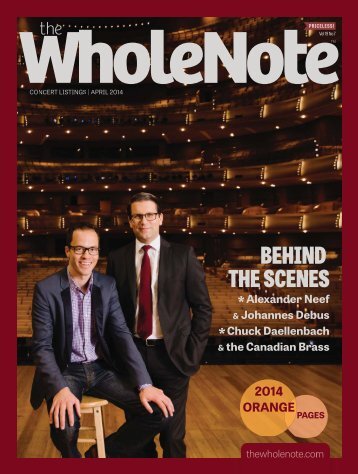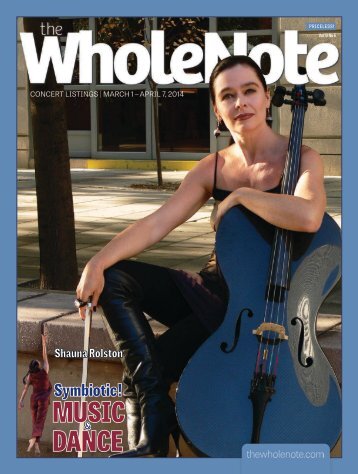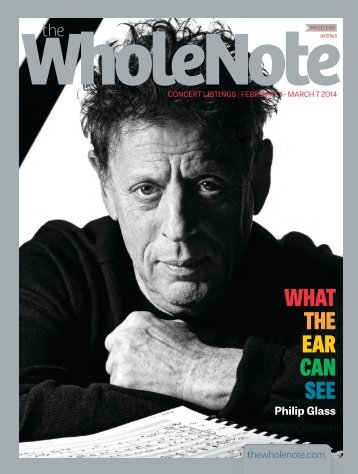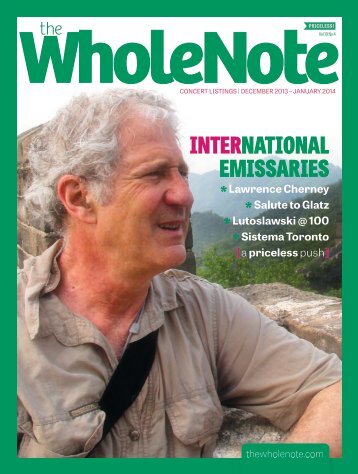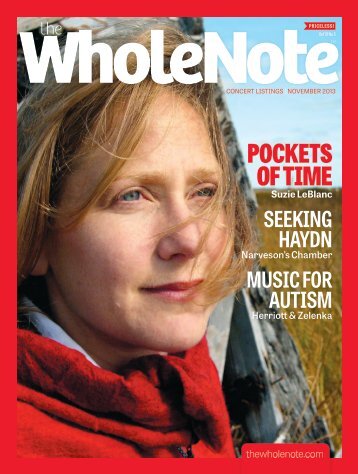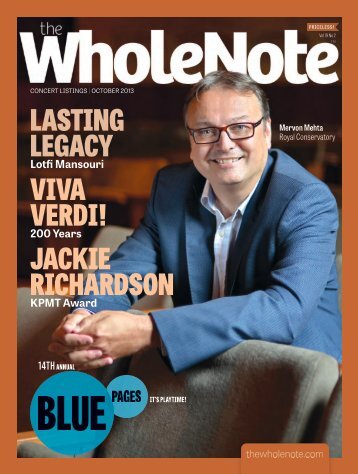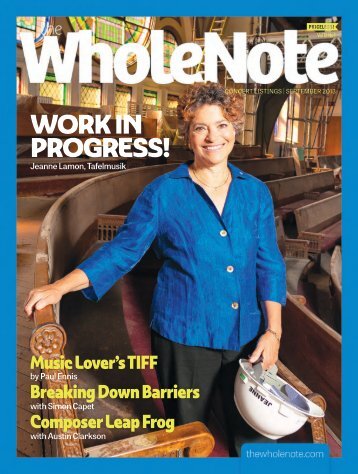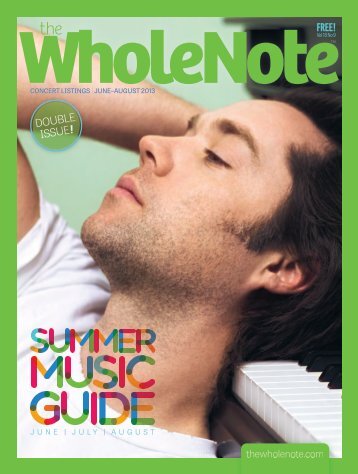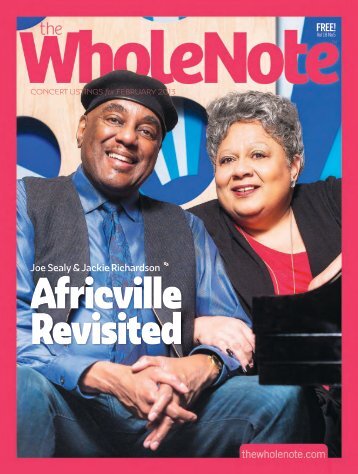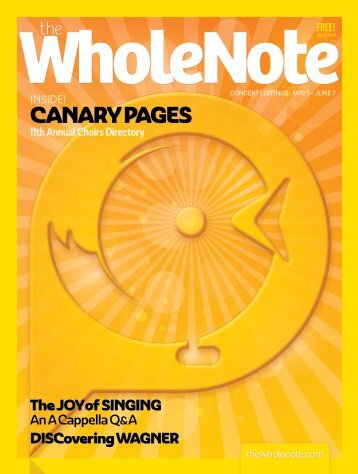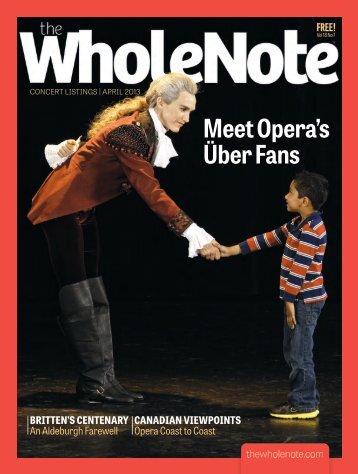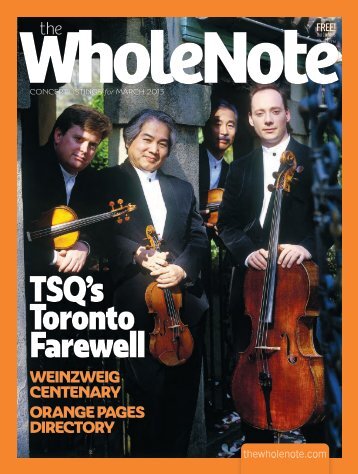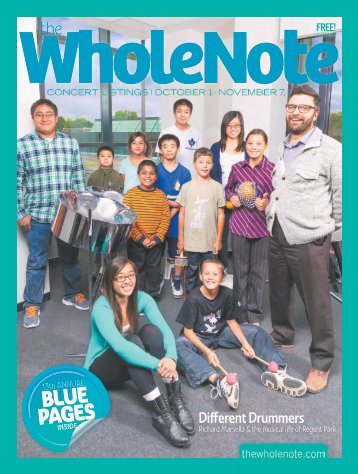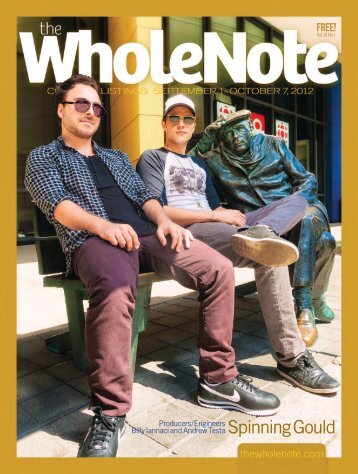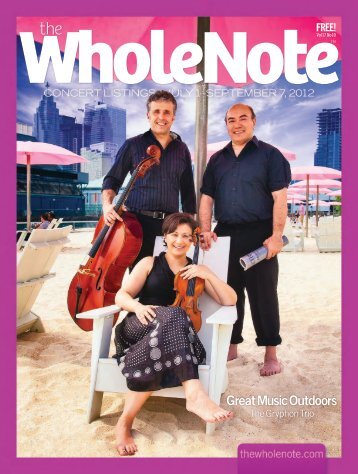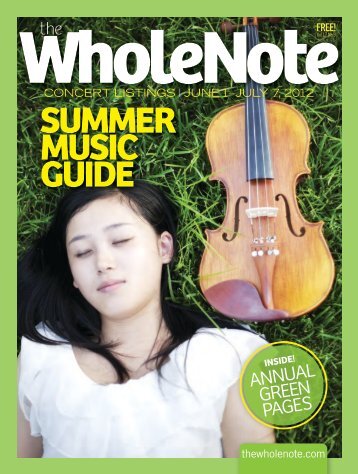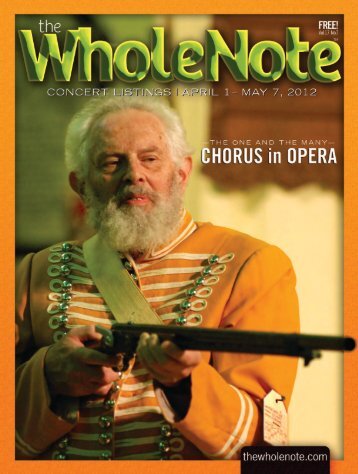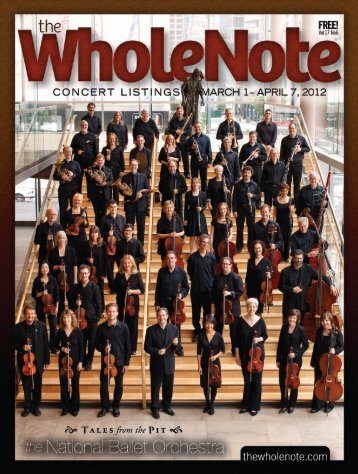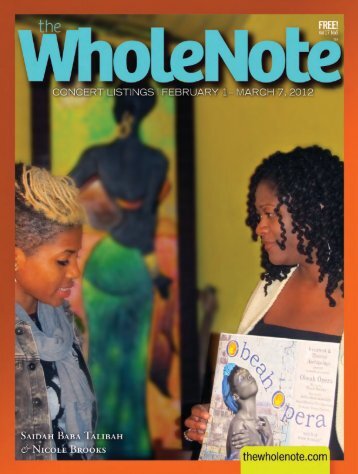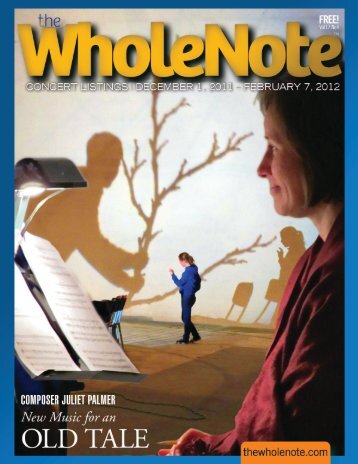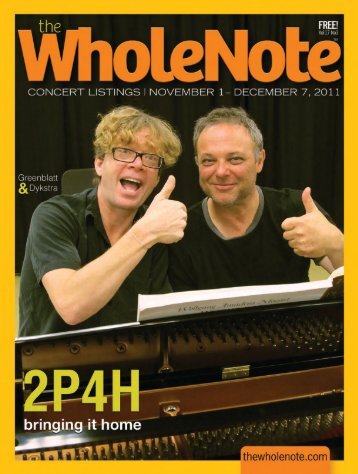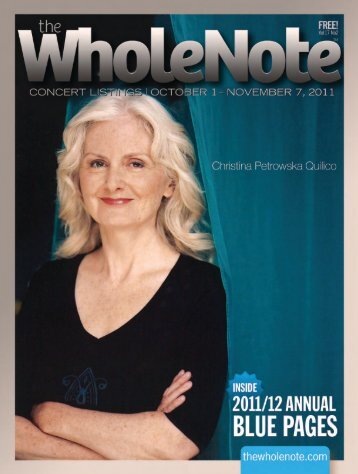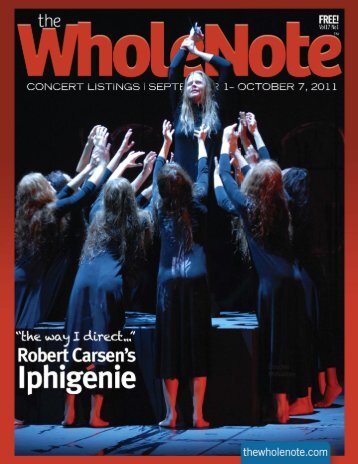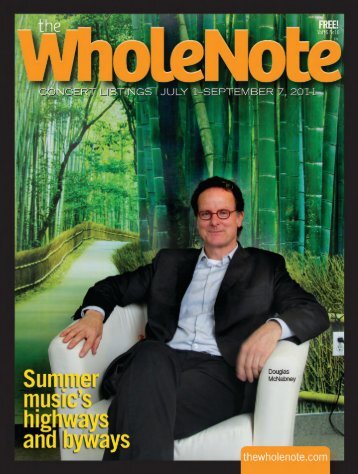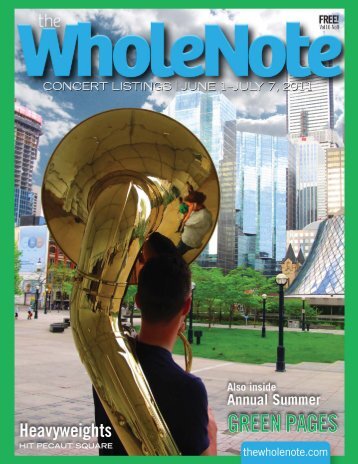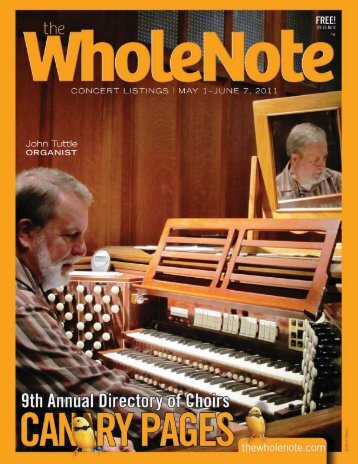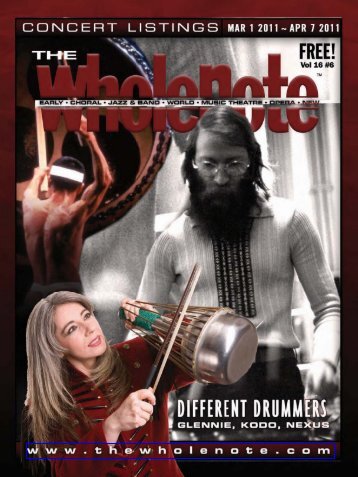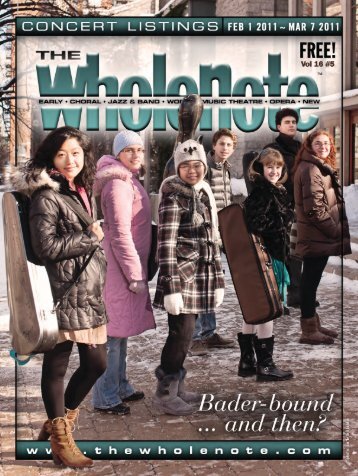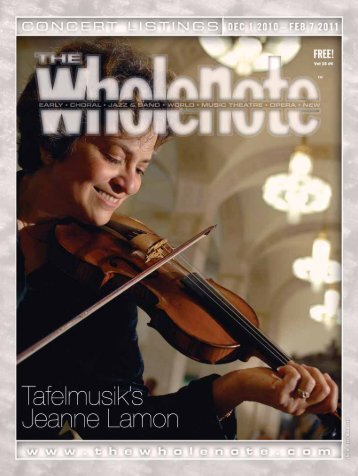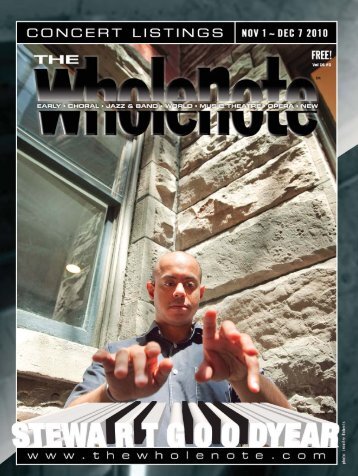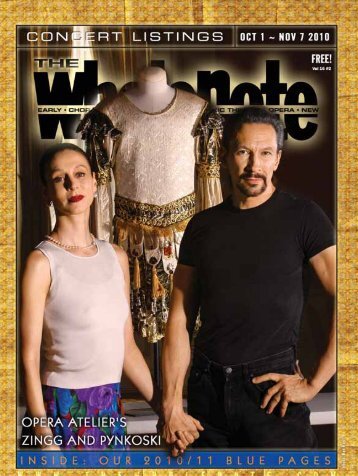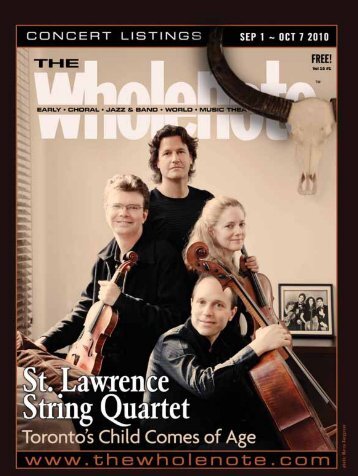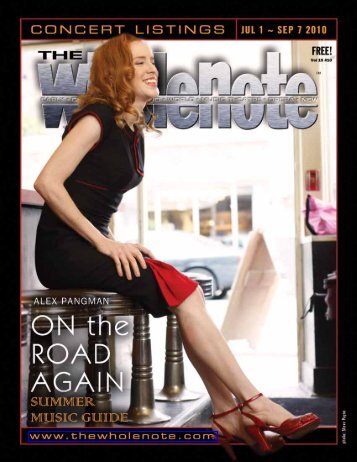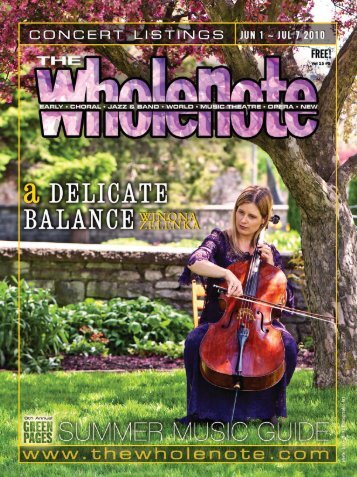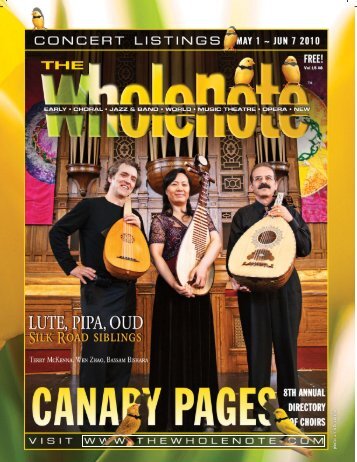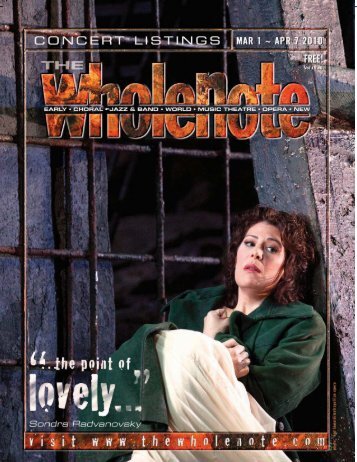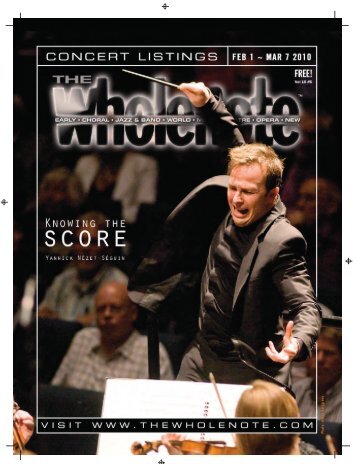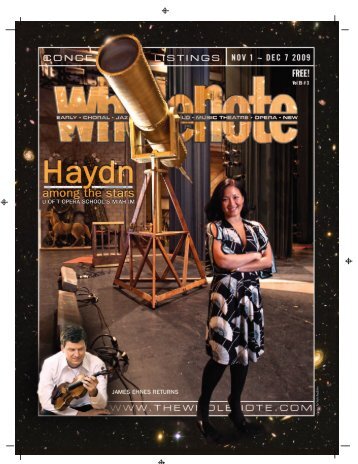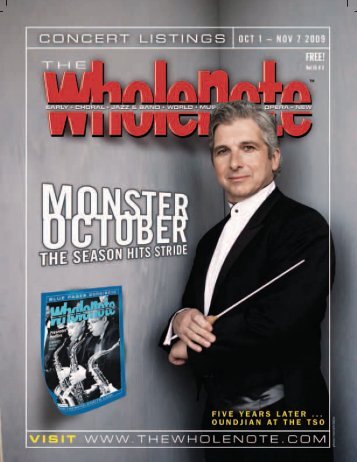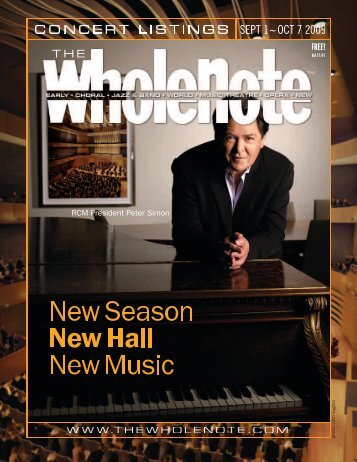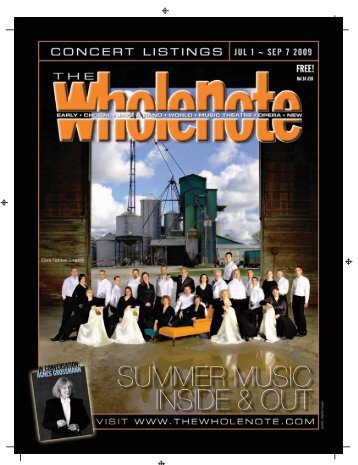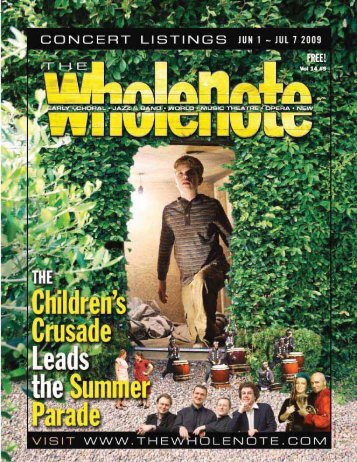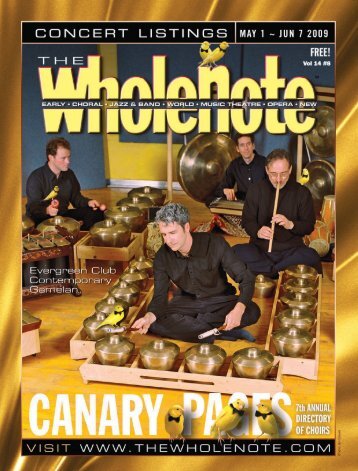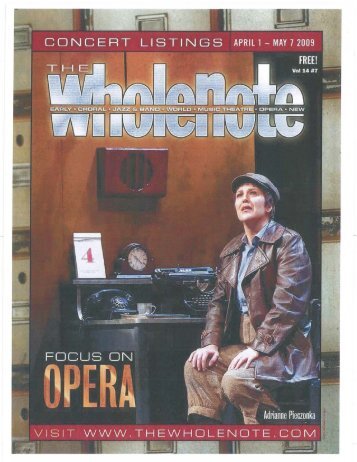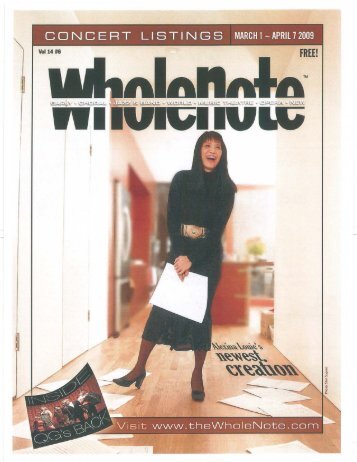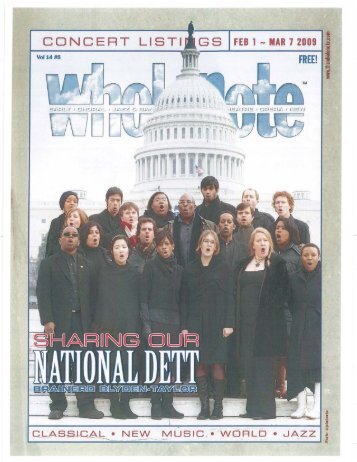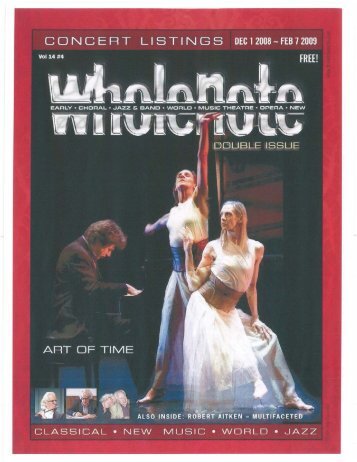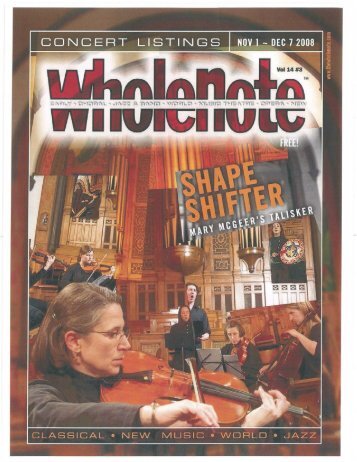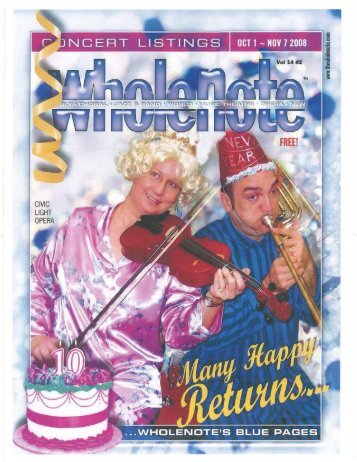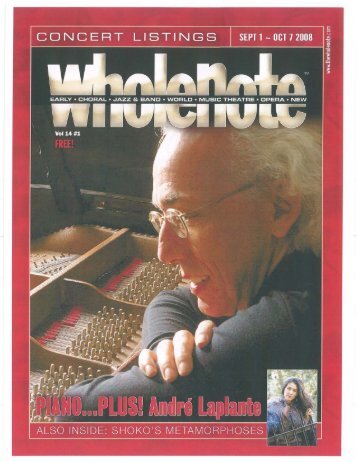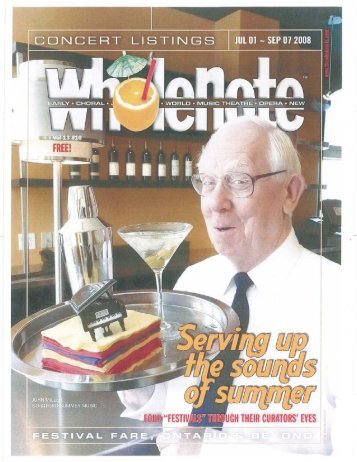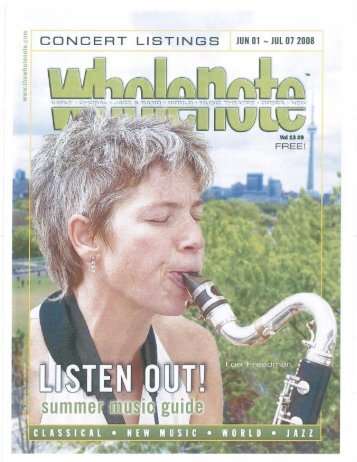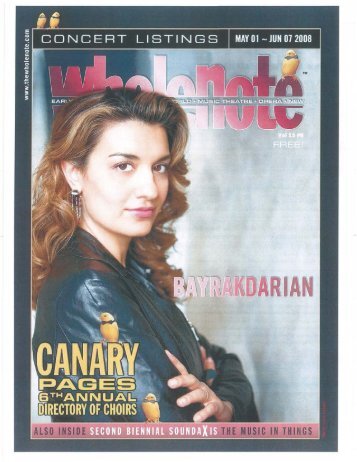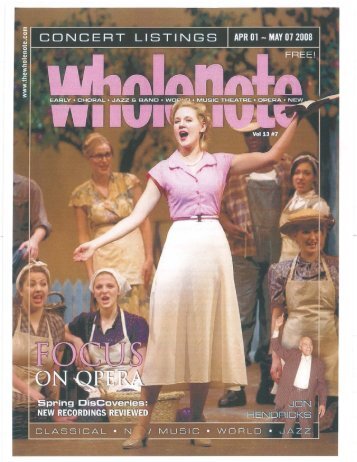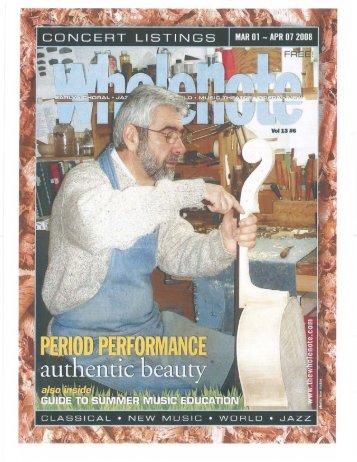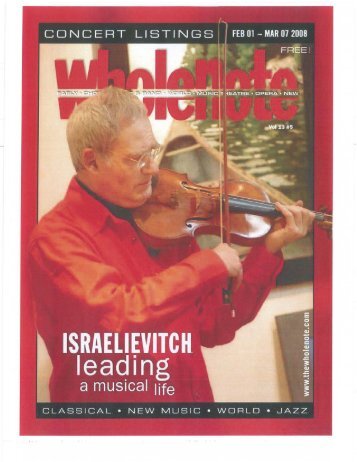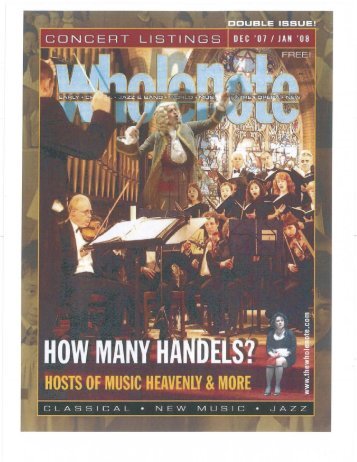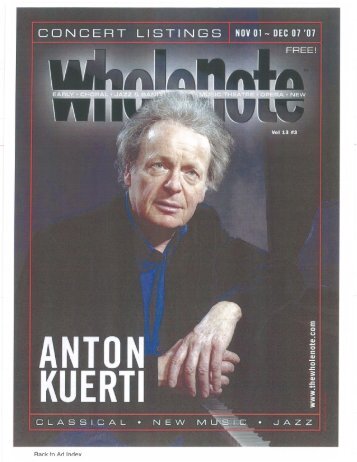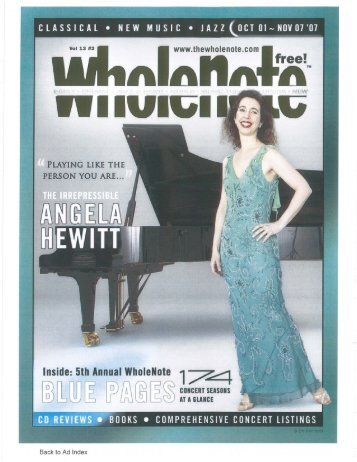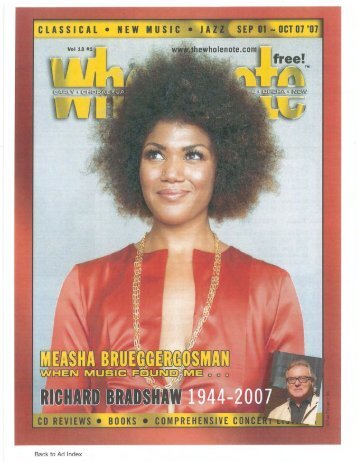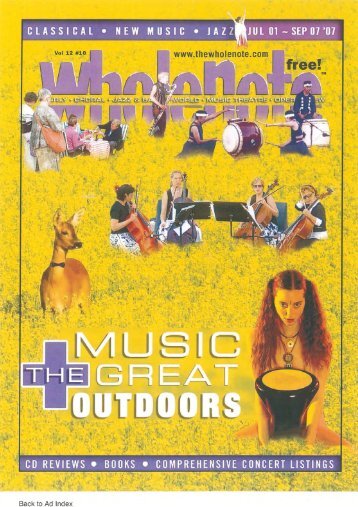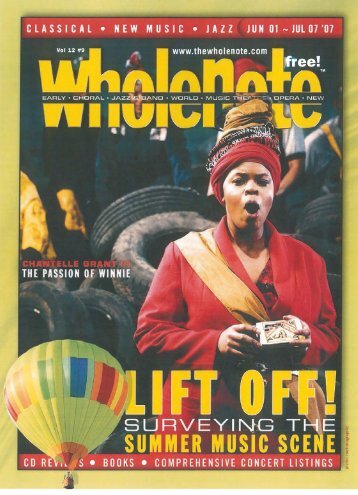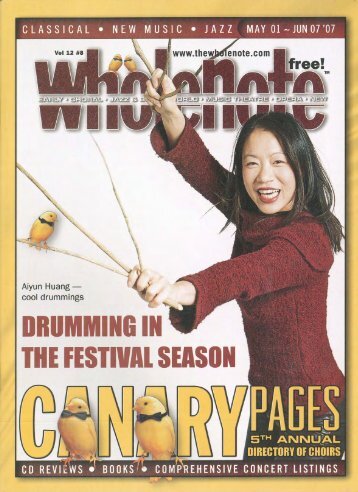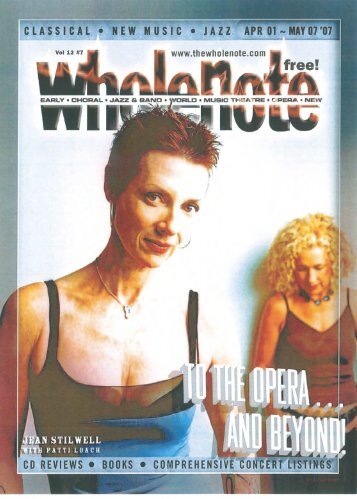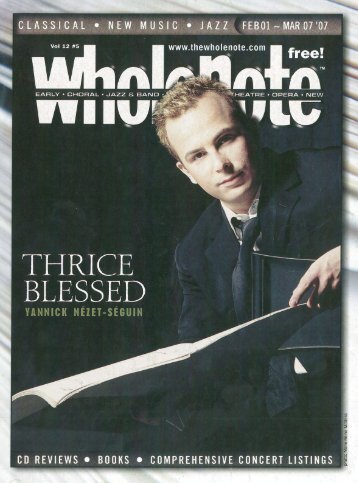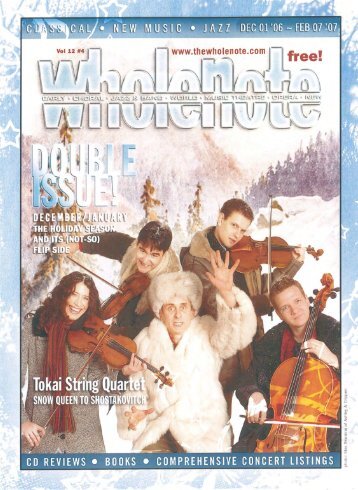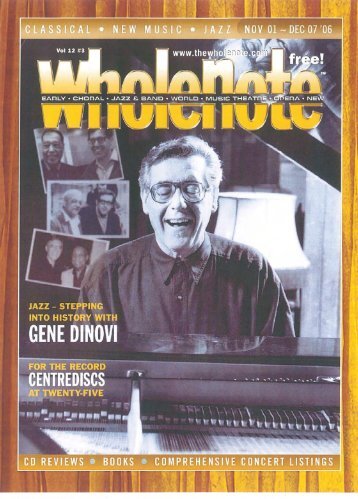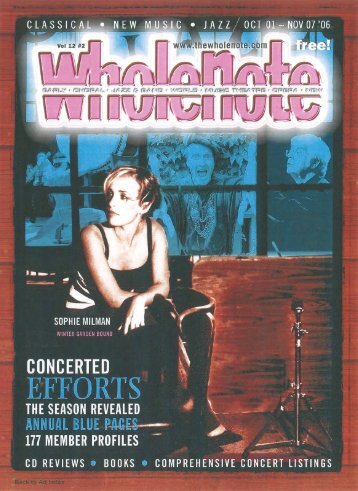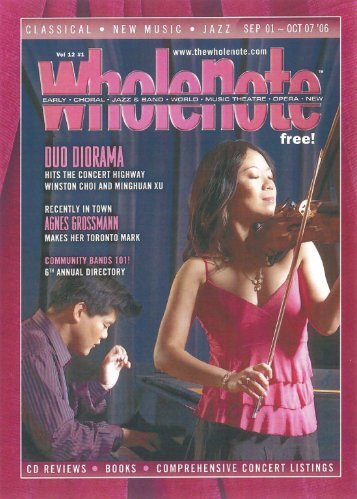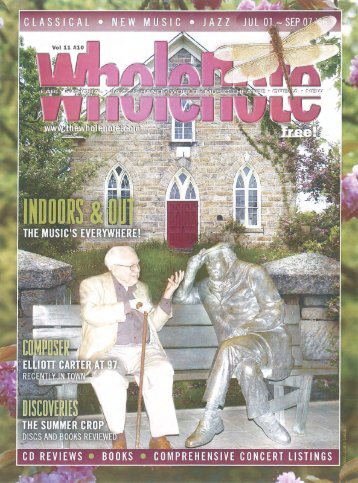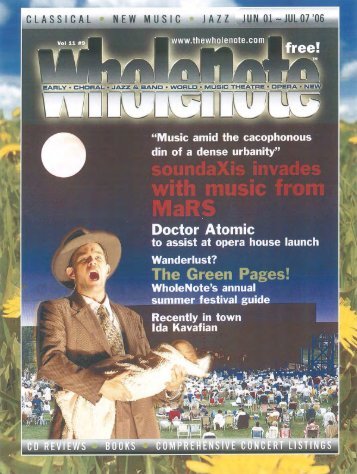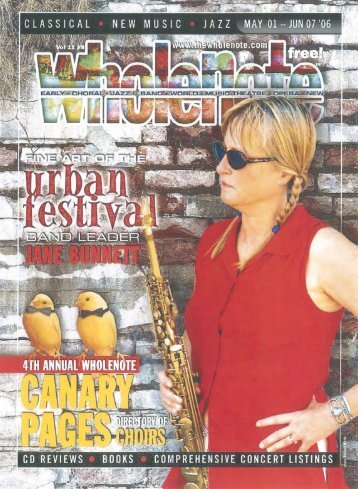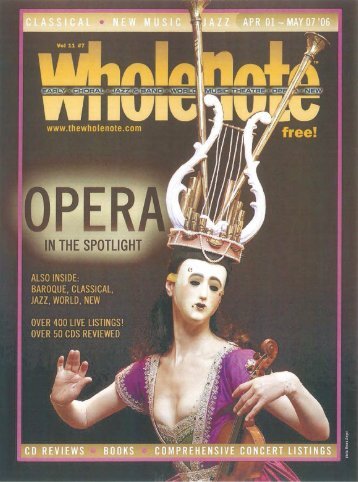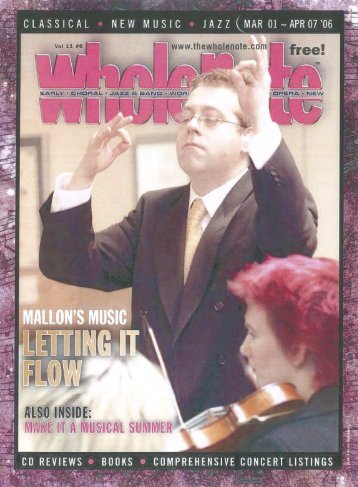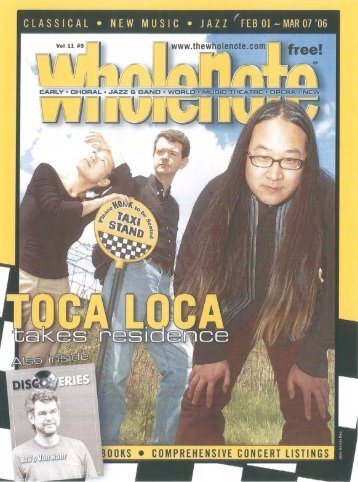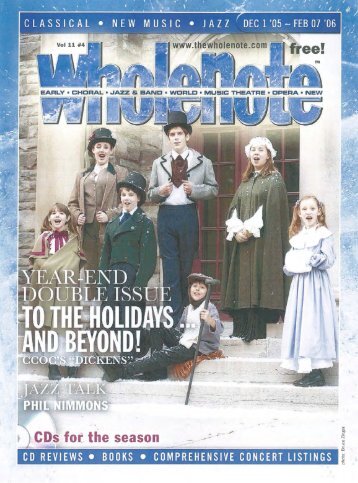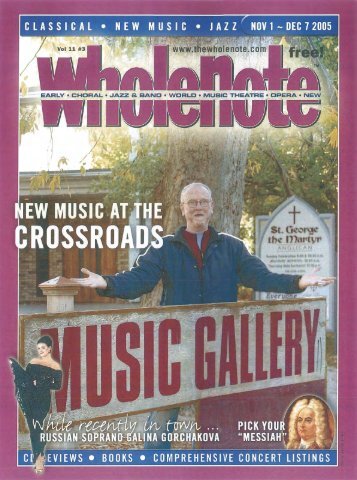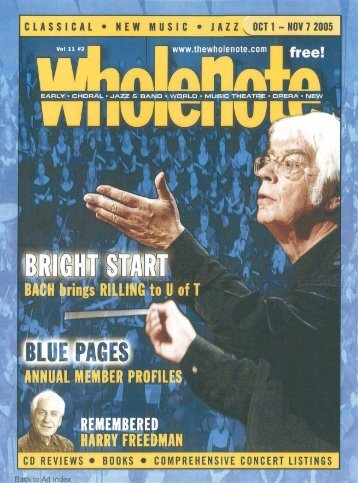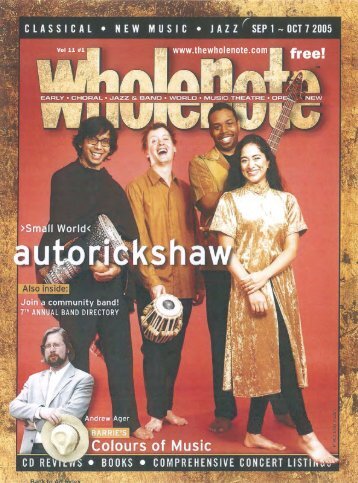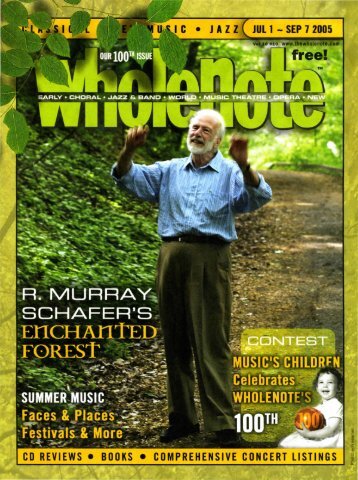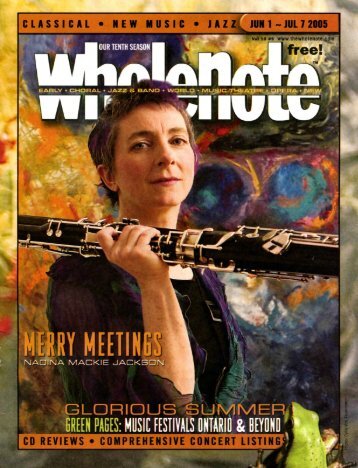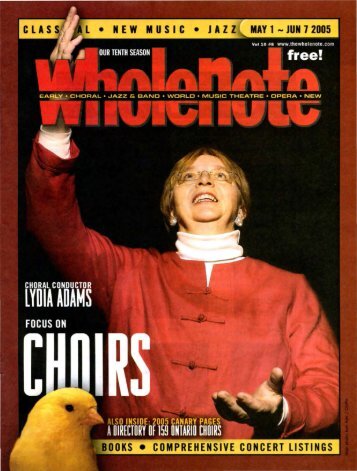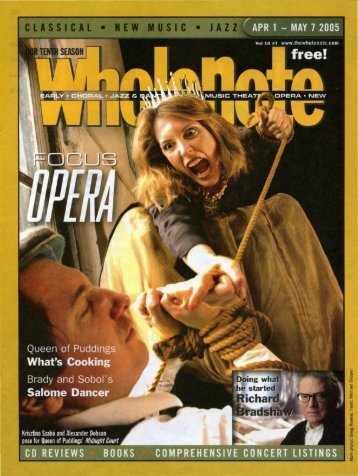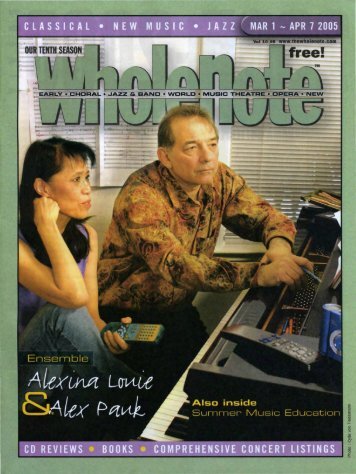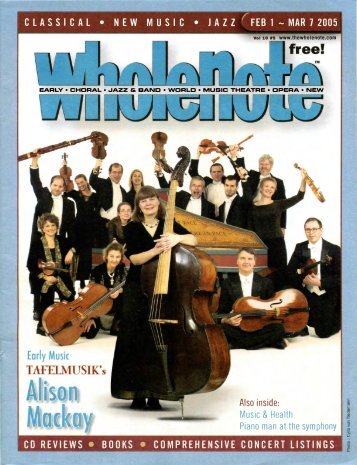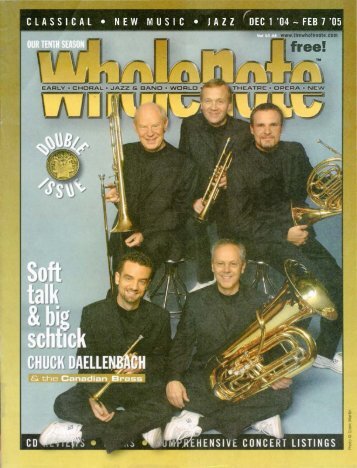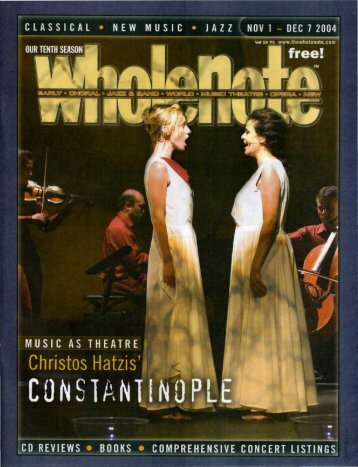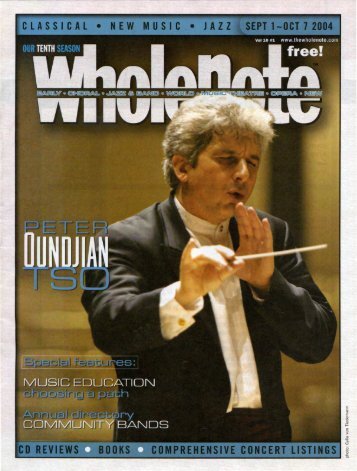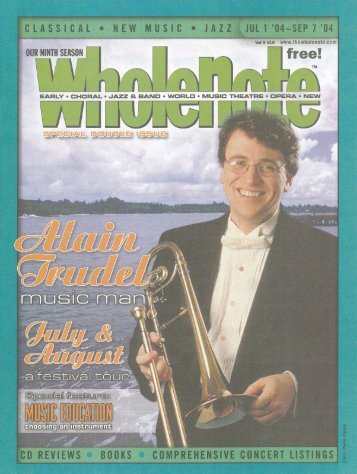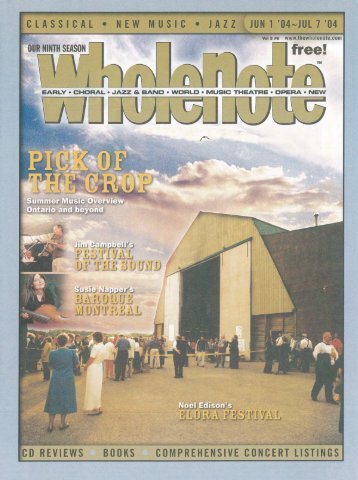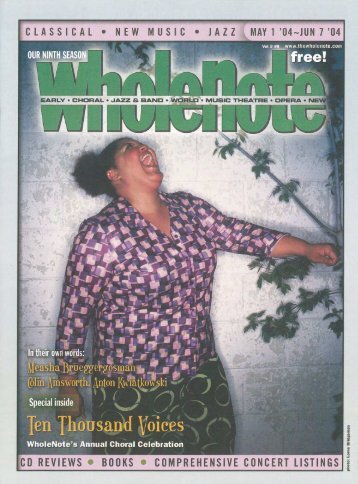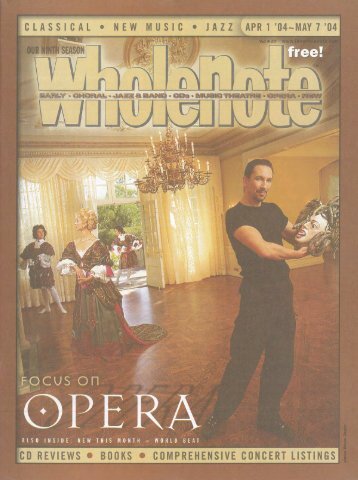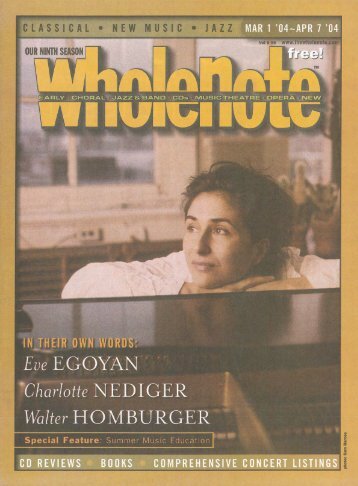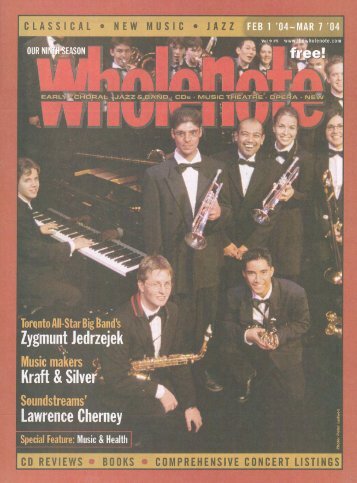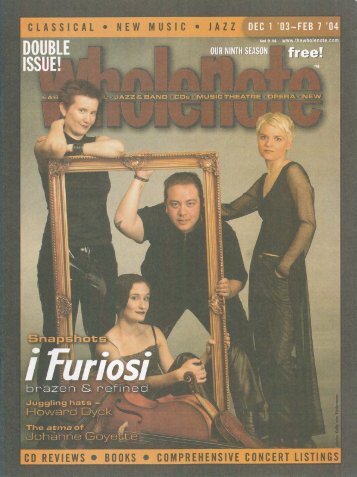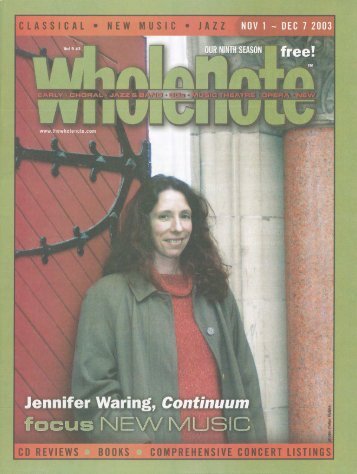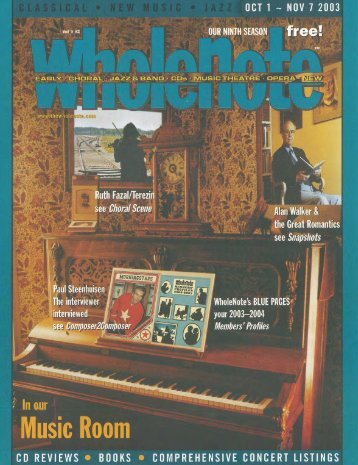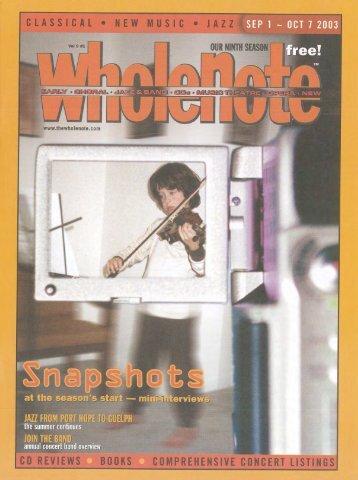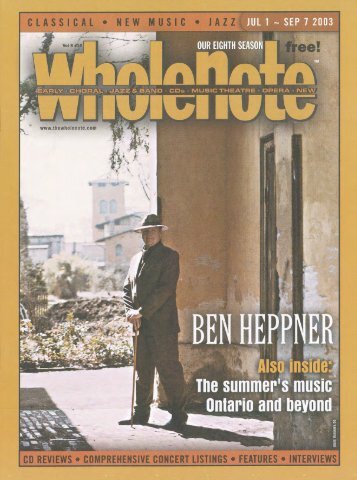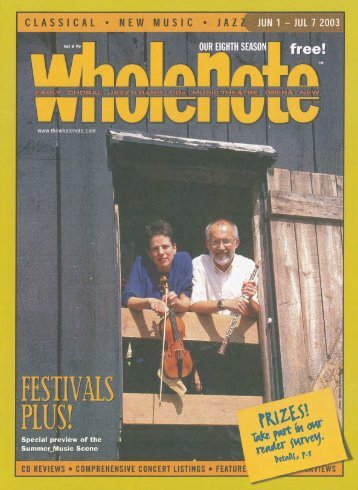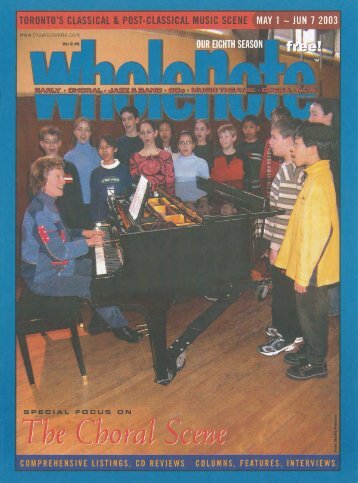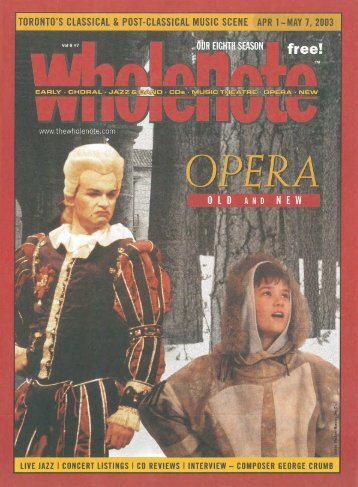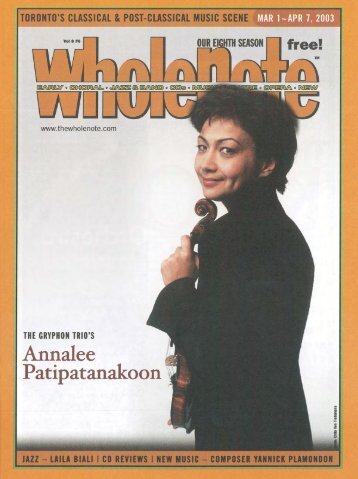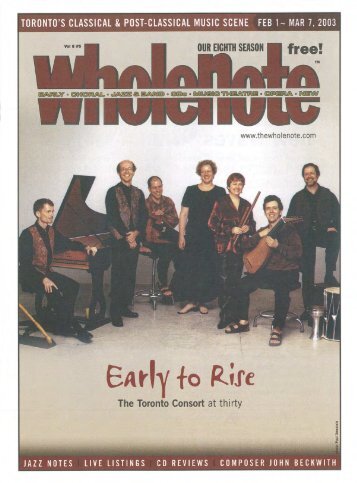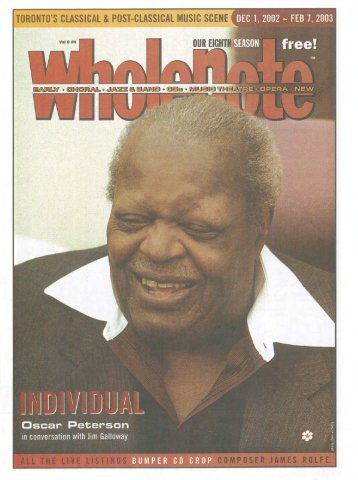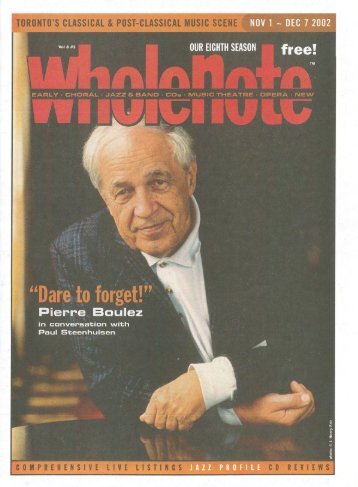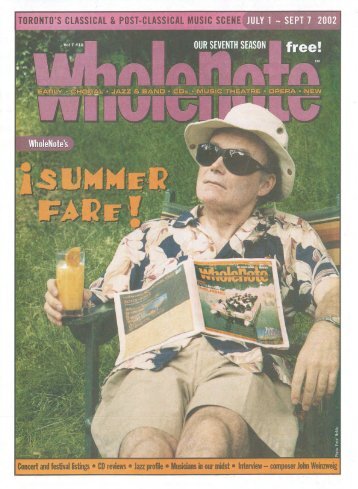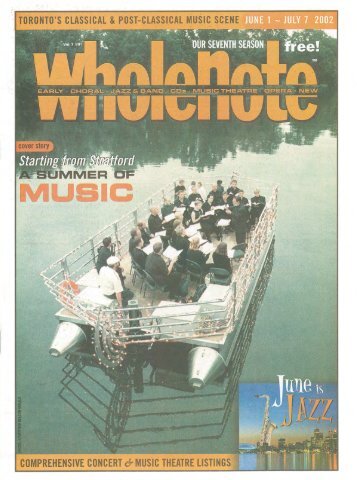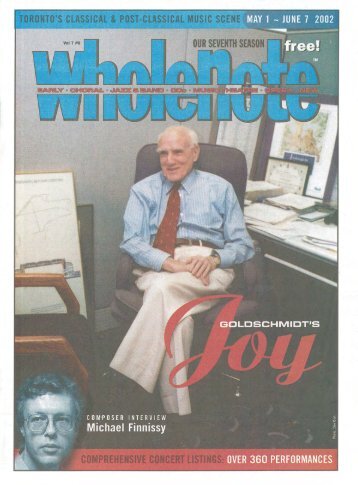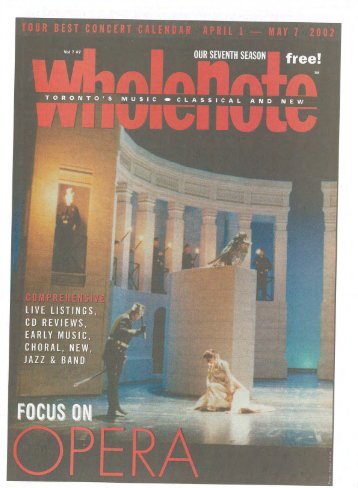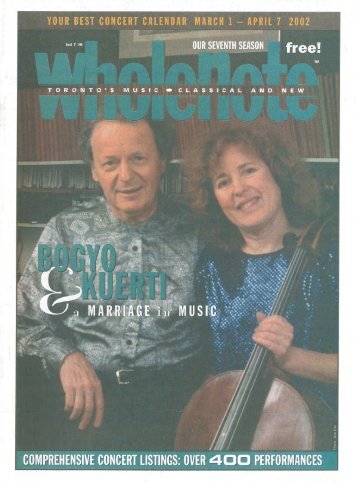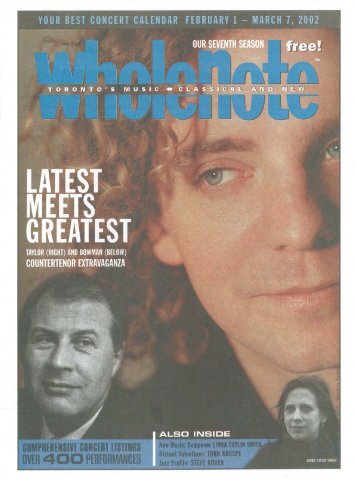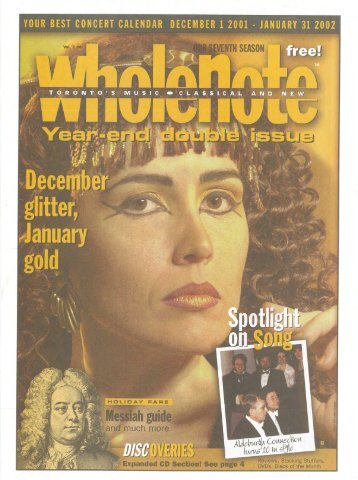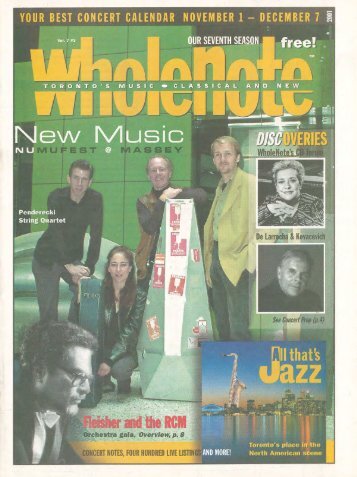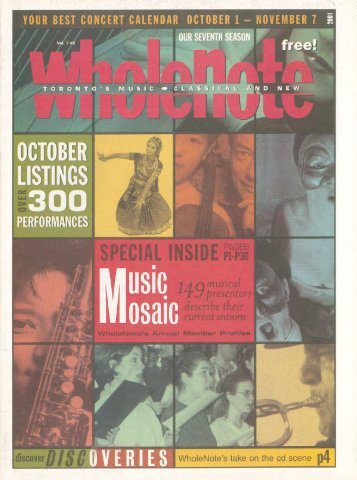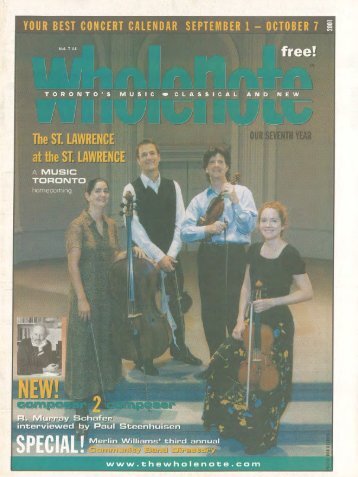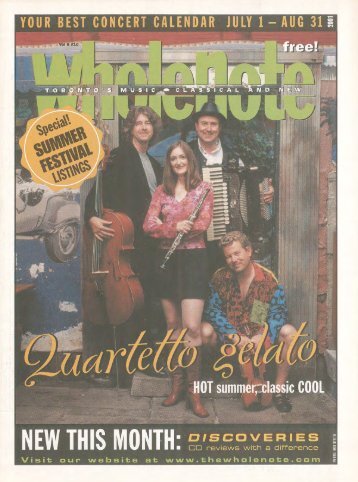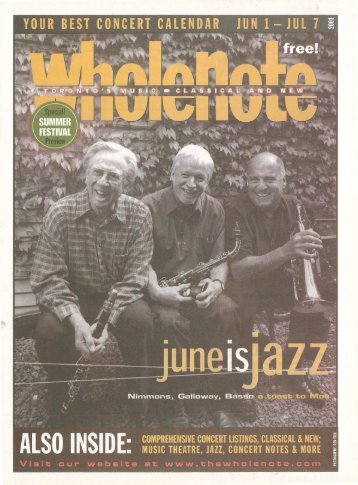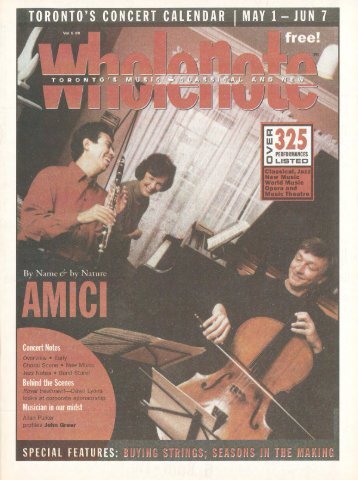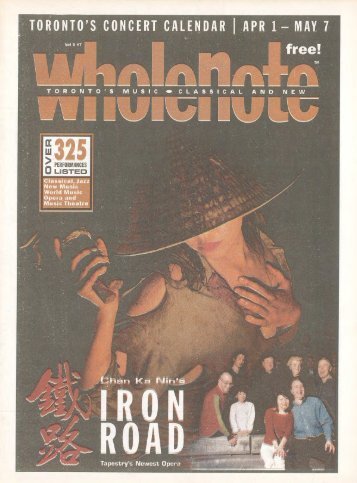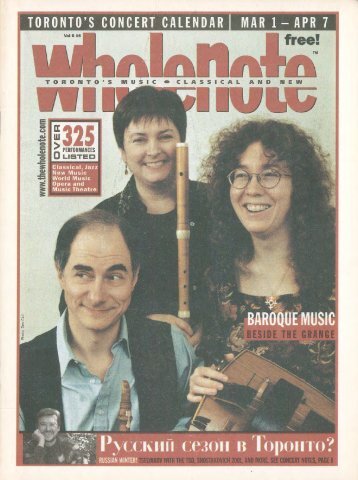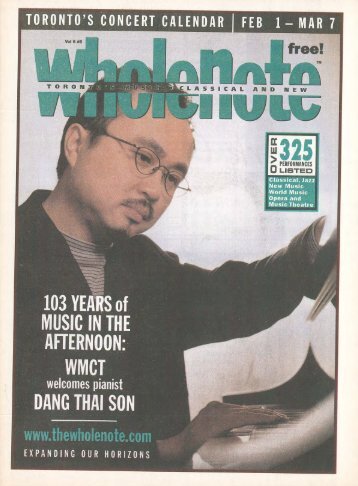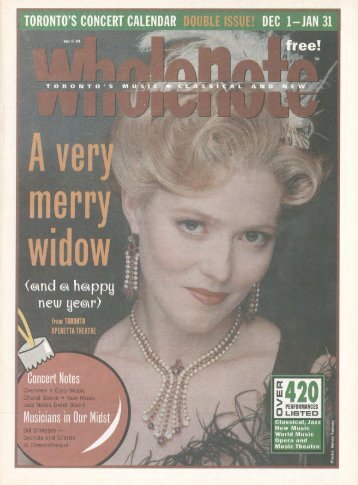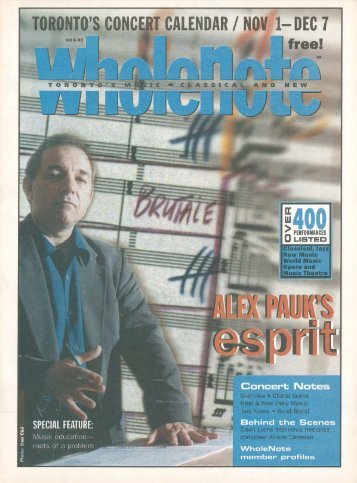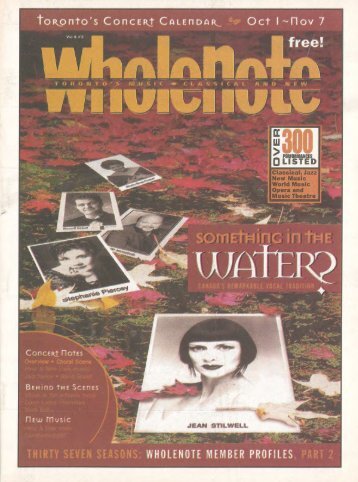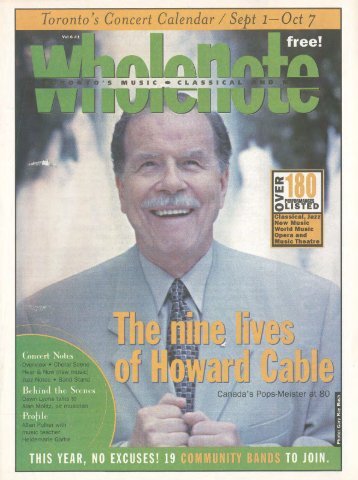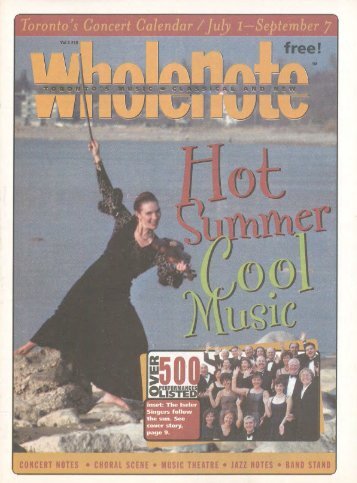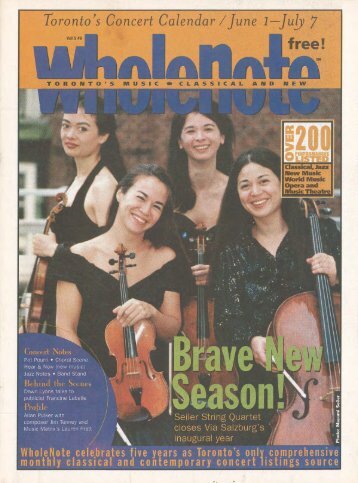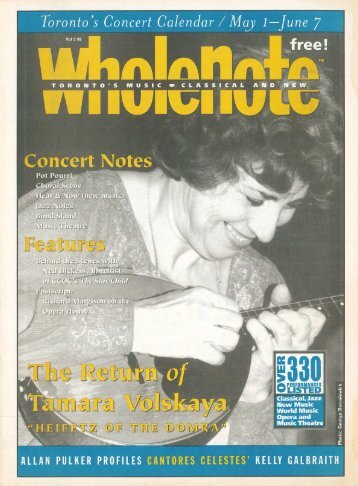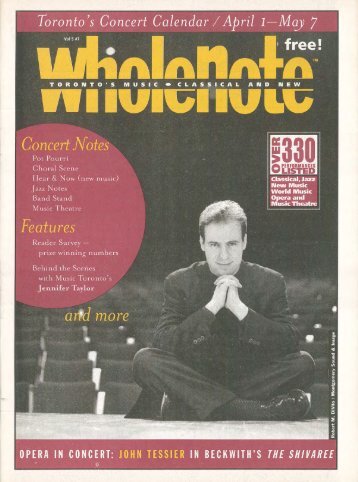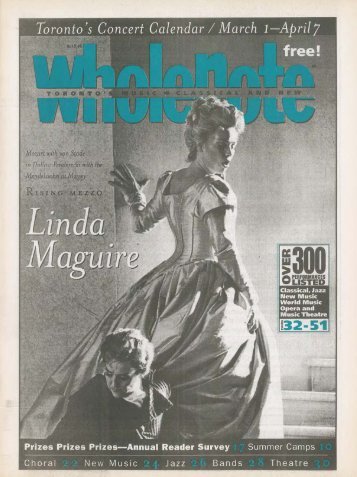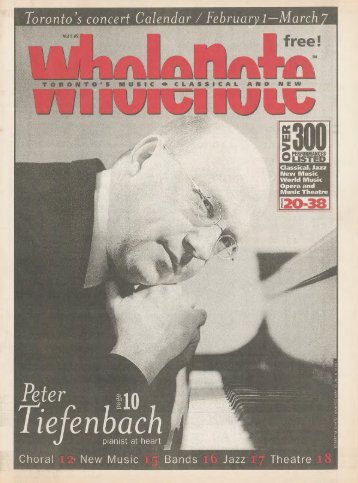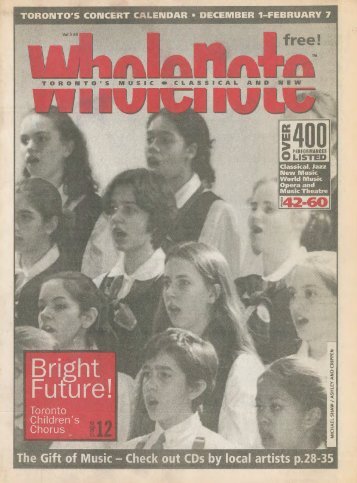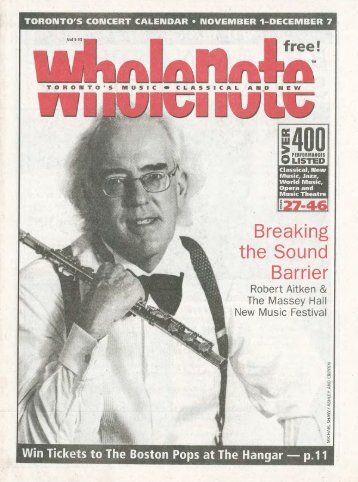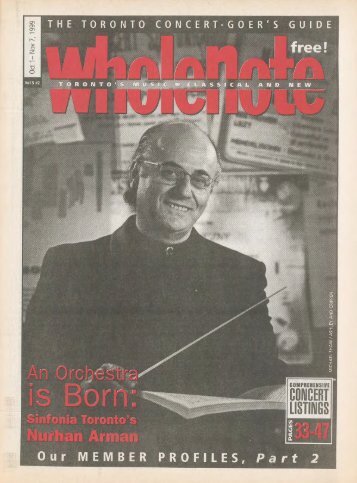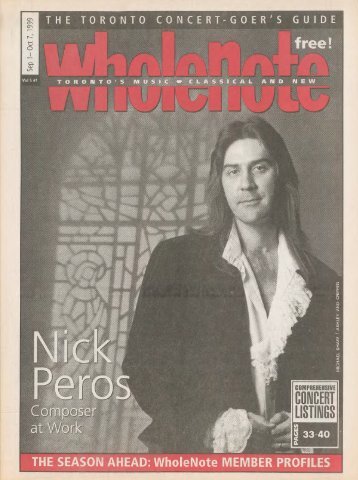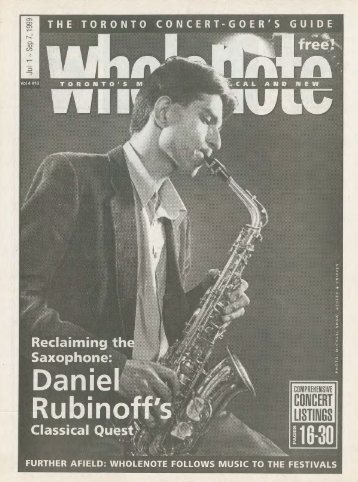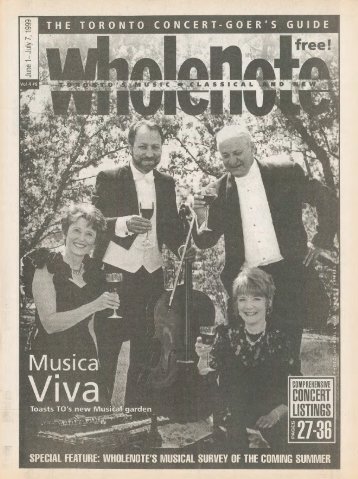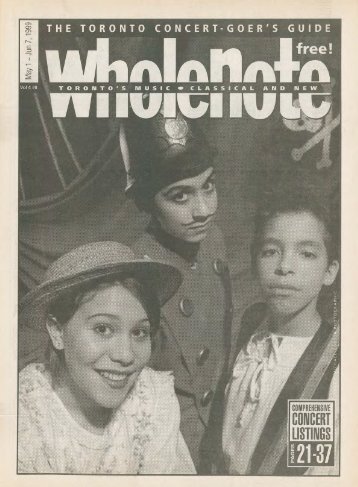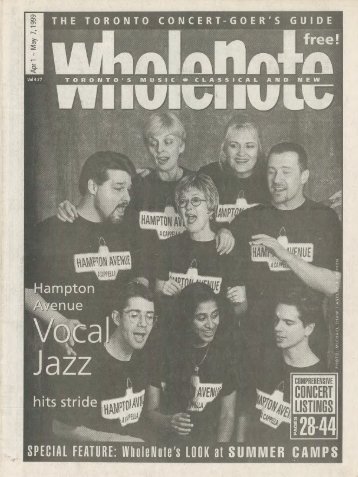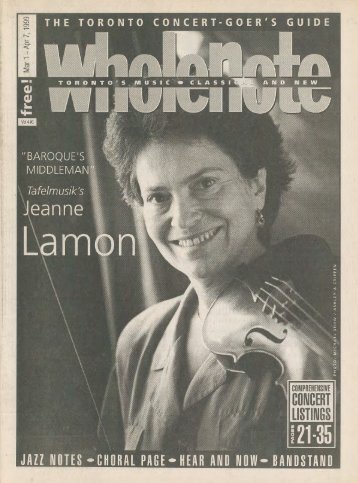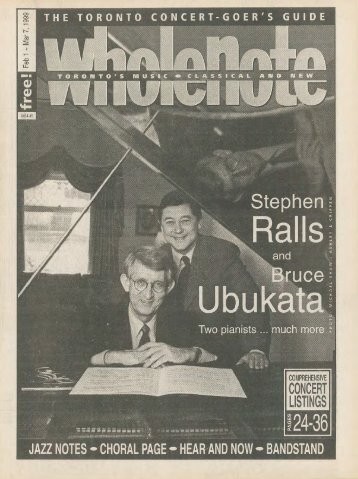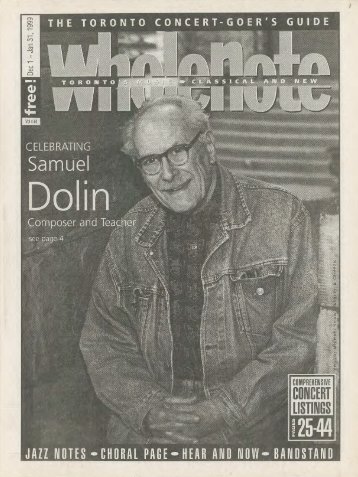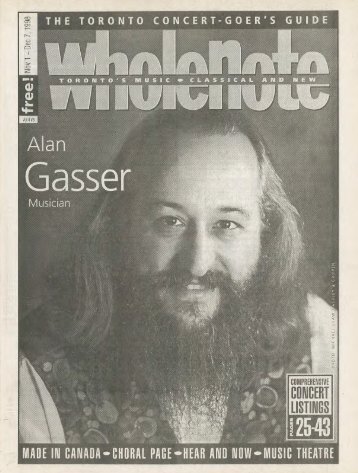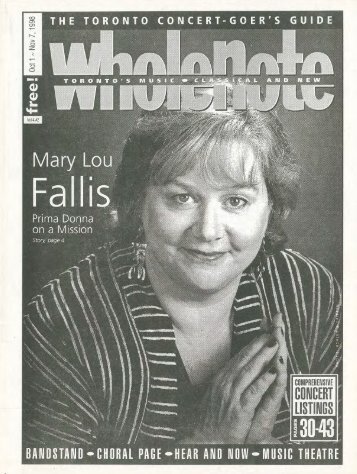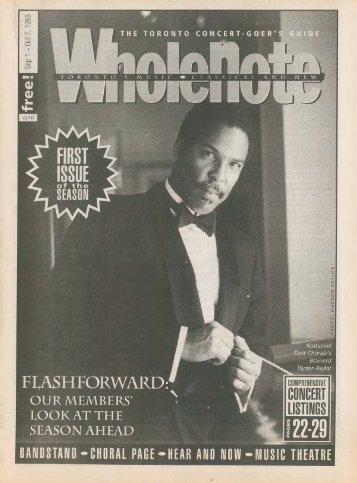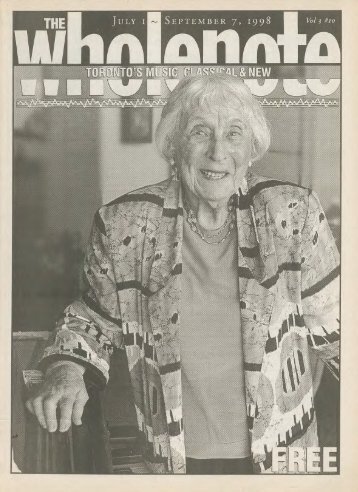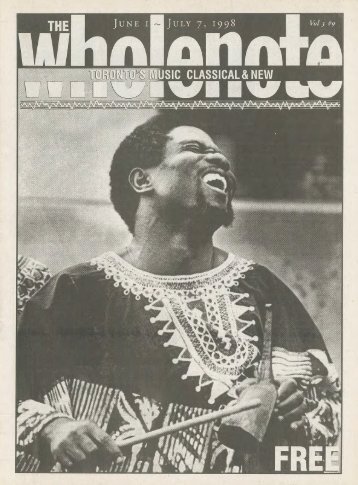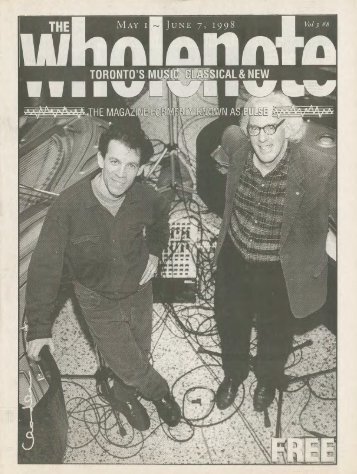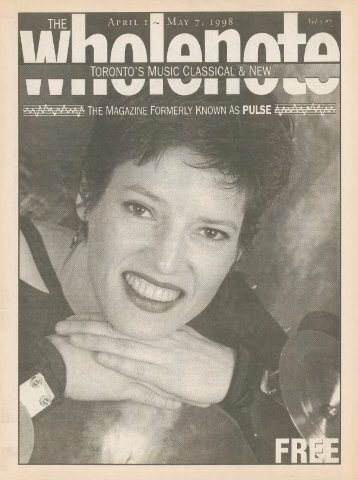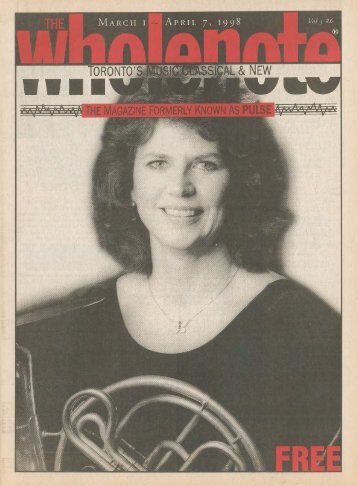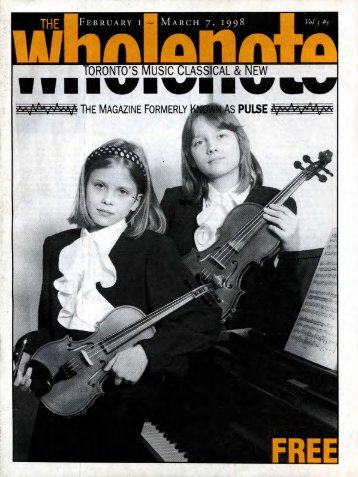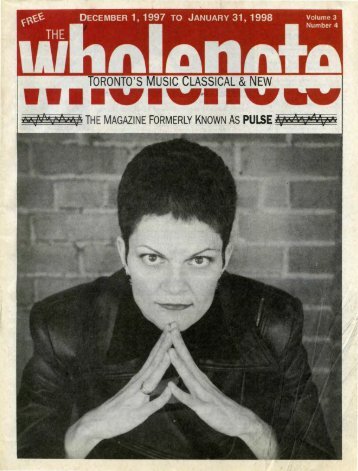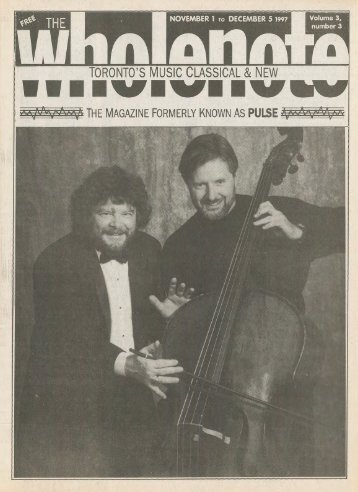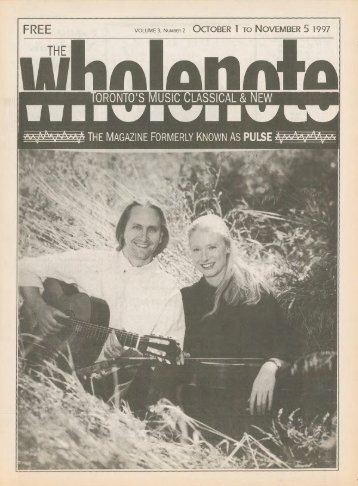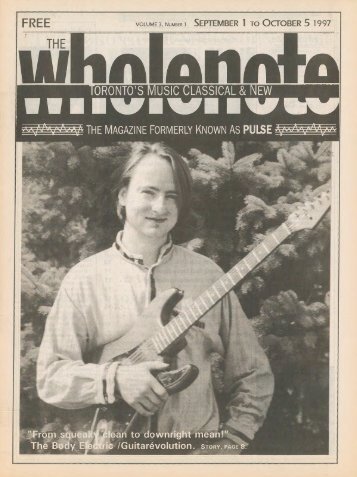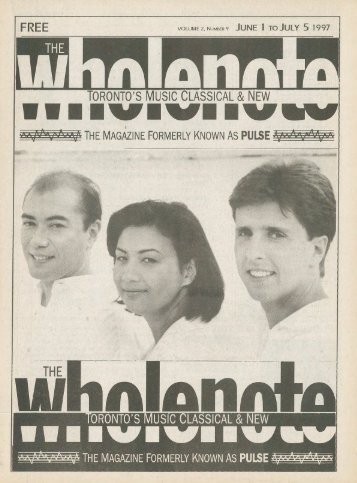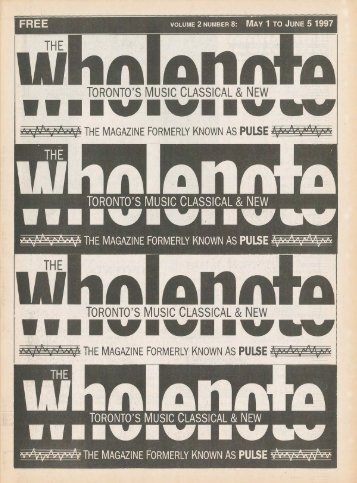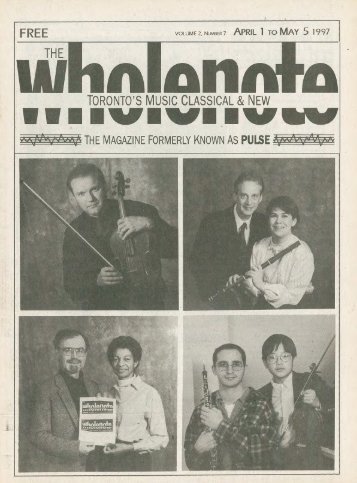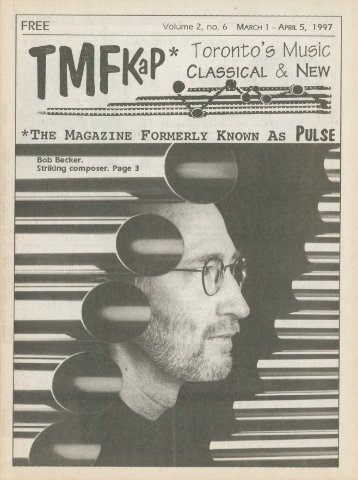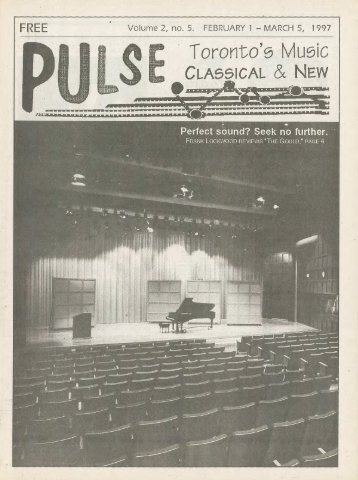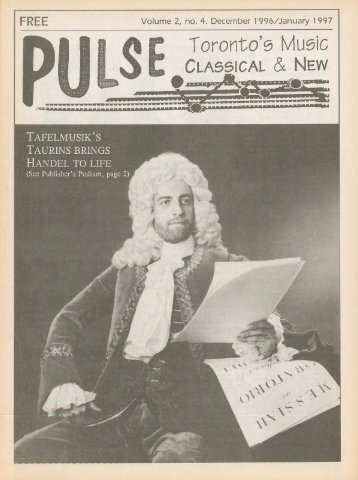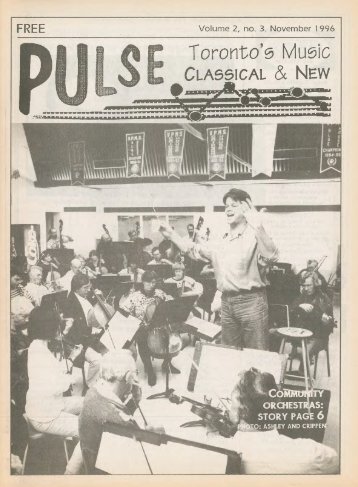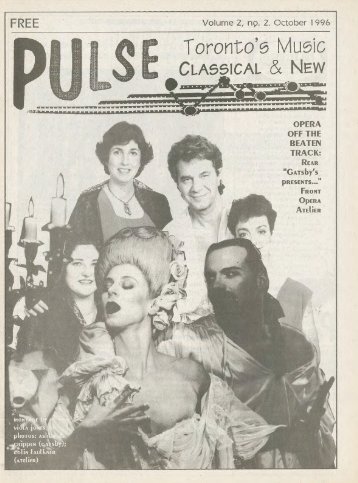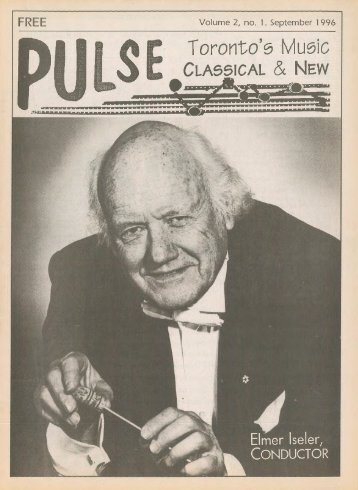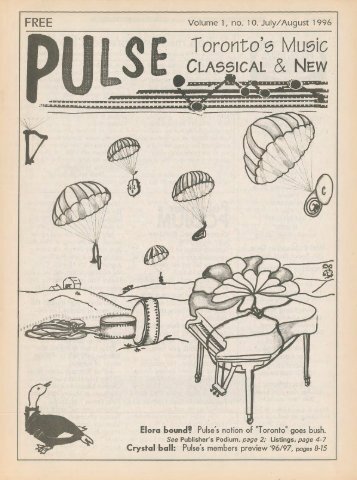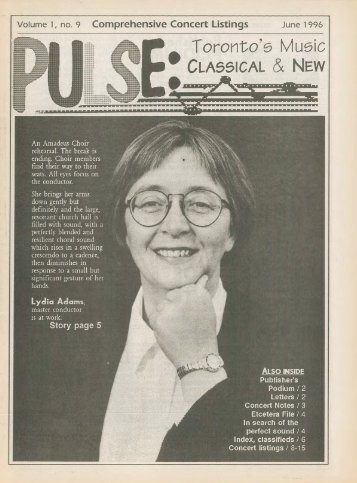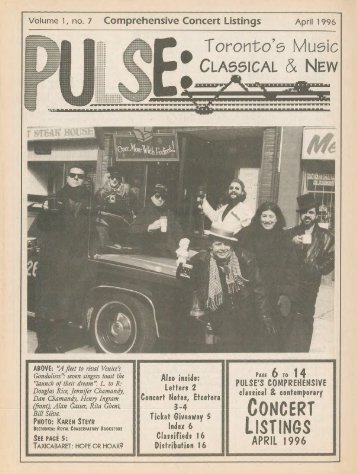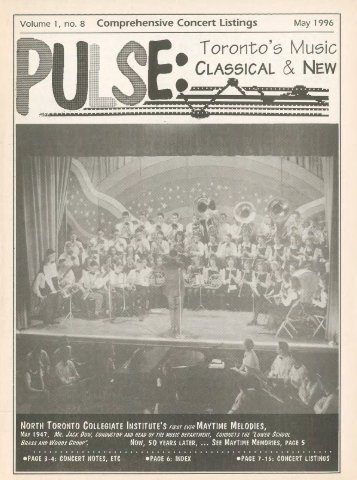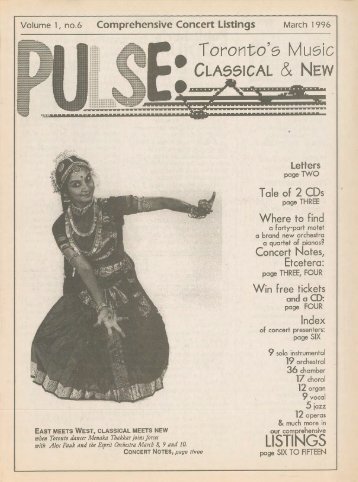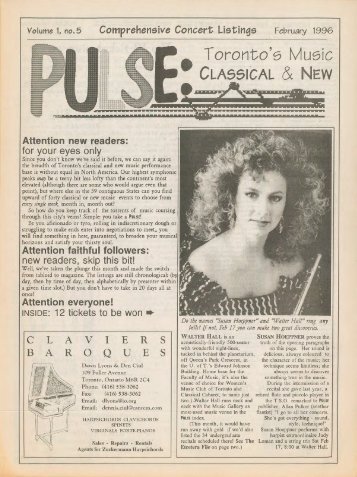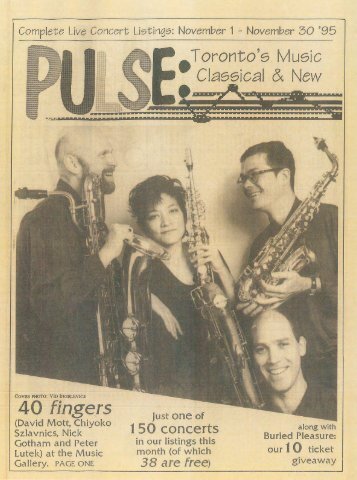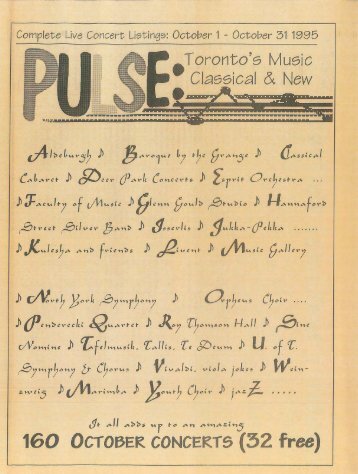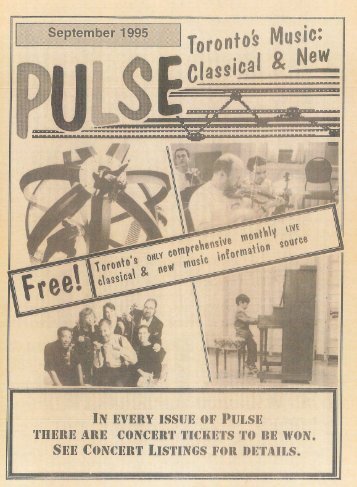Volume 12 - Issue 1 - September 2006
- Text
- Jazz
- Toronto
- Theatre
- Musical
- September
- October
- Choir
- Festival
- Orchestra
- Arts
Quebecois domiciled in
Quebecois domiciled in France:tenor saxophonist Frani;:oisTheberge and drummer Karl Jannuska.The five play nine Freeboporiginals.Neither date is far out, unlikeBerthiaume's earlier reductionistCDs. Here the guitarist's supple fillsand soloing lie within parameters setby Herb Ellis and Bill Frisell, givingthe CD a country-ish vibe. Due tothe additional colours available fromthe horn section, the quintet date ismore memorable. Expansive arrangementscreate voicing thatmakes the band sound bigger thanfive pieces. Have You Met Mr. Jonesis the stand-out track. Written byDonato, it's a slinky ballad centredon the bassist's rounded grace notes.Around him are call-and-responsehorn riffs and echoing guitar fills.Elsewhere Donato's woody lopeanchors the improvisations. Wojtasikshowcases muted gracenotes; Theberge intense doubletonguedtrills and slurs; Jannuskarestrained rolling bounces; andFelberbaum speedy runs.Similar teamwork is apparent onthe other CD, although the guitaristtakes most of the solos. In thissmaller setting Donato is moresensed than heard, though his oblique,sturdy piloting remains . Thenub of Tanguay's accompanimentis rim shots and ratamacues,unique additions to the guitarist'slapidary solos.Using chiming runs, Berthiaumeshines with a natural romantic bent.Prime instance of this is Nose Worthy. Sprinkled with C&W licks, thestraightforward melody skirts ordinarinessdue to drum rolls andpops plus a walking bass line.Tough plucking from Donato rescuesother tunes where the guitarist'sfinger-picking threatens tomove into supper club territory.Both CDs are fine examples ofan older master' s collaborationwith younger improvisers .Ken WaxmanBlues in the NightAnn Hampton Callaway; SherrieMaricle; Diva Jazz OrchestraTelarc CD 8364166CONTINUES ON PAGE 68I. Classical GendingsGamelan of Central JavaDunya fy 8041II. Ceremonial MusicGamelan of Central JavaDunya fy 8042Extended play -- the depths of KarawitanIII. Modes and Timbres•Gamelan of Central Java .Dunya fy 8073 ---- _IV. Spiritual MusicGamelan of Central JavaDunya fy 8074V. Gaya Y ogyakartaGamelan of Central JavaDunya fy 8075VI. Kraton SurakartaGamelan of Central JavaDunya fy 8103VII. Edge of TraditionGamelan of Central JavaDunya fy 8104The Italian label Felmay has released seven remarkableCDs of first-rate performances on severalmuch admired Central Javanese gamelan (orchestras).For those unfamiliar with the term, I use'gamelan' here not only for the percussion-basedorchestra of Java, but also to refer to the musicmade on it. Javanese musicians amongst themselvesoften use the flowery term 'karawitan' forthis traditional music.With mythic roots in the Sufi-influenced Javanesekingdoms of the 16th century, over time, gamelanand its music has permeated the various levels ofJavanese society. Ethnomusicologist Daniel Wolfwrites in the liner notes: "Gamelan is played todayin Central Java by Muslims, Protestant and RomanCatholic Christians, Buddhists, Hindus, as well asby the nominally Muslim adherents of Javanese mysticism."Thousands of gamelan sets are found in villages,palaces, radio stations and schools throughout thisisland of some 115 million inhabitants .Gamelan is used as a medium for mediation by itsperformers, as well as for various kinds of theatre:dance, shadow puppetry and various genres of opera.Gamelan has also escaped its original islandconfines over the last century and spread around theworld. Today, Torontonians can boast of sevengamelans of various types played by students, amateursand even professional musicians amongst us.How can a single series of seven CDs capture theessence of this spiritually and aesthetically profoundsound world? How can an outsider attempt topresent an extensive musical repertoire from aliving tradition of thousands of pieces, some withroots going back 500 years, and still others composedyesterday? How can recordings capture theintricate depth of the multifarious orchestral soundof gamelan and present it in a meaningful way tonon-Javanese listeners?WWW. THEWHOLENOTE.COMThese are some of the issues addressed by Italiangamelan aficionado, patron and music producerJohn Noise Manis , whose many music projects canbe found on his site yantra@gamelan.it. Theseseven Felmay CDs are a testament to his passionfor the gamelan music of Central Java. Since 2001 ,he has intrepidly and repeatedly traveled to Java torecord this magnificent music at various musicconservatories, royal and princely courts, andradio stations.Not simple field recordings these, each CD comeswith its own clearly-articulated theme, noted in itstitle and supported in the liner essays by leadingscholars in the field .Volumes I, II and IV arguably showcase the heartof the tradition. The ritual gamelan Sekaten, whichperforms monumental and iconic instrumentalpieces during the holy week celebrating the birthand death of Prophet Mohammed, is featuredtherein. An even earlier music, the Hindu-kingdomera ceremonial repertoire performed at the palaceof Mangkunegaran (in the city of Surakarta) isrepresented by the works 'Kodhok Ngorek' and'Carabalen'. Each of these is performed on its ownspecial gamelan on Vol. II.On the other end of the spectrum, Vol. VII, "Edgeof Tradition" features a particularly fascinating andmusically satisfying experiment on track 2, 'KombangMara'. Here, two female vocal soloists (pesindhen)inter-weave their different texts and melismaticvocal melodies which are derived from aseparate vocal genre called 'macapat' over gamelanaccompaniment. This resultant mix may beparticularly attractive to western ears attuned topolyphonic music.Vol. III, "Modes and Timbres" offers a differentvantage point, one from which the various melodicmodes used in gamelan are explored. In addition,the different families of percussion, wind andstring instruments are highlighted in novel andrevealing ways.These CDs by no means exhaust the range of currentgamelan practice. In my wish-list for furthervolumes, I'd like to put in a request for the morepopular offshoots of gamelan music. These includesuch genres as 'Dangdut' (in gamelan adaptation),'Sragenan' and 'Campur Sari', none of which arerepresented in the present series. The latter genreis so wildly popular in its homeland that some feelits dominance threatens established types of gamelanmusic. I would like to suggest that for a westernaudience hungry for new 'world music' experiences, these upbeat and attractive 5 minute songbasedgenres may serve as a tempting appetizer tothe masterpieces of court art - which I personallycherish - such as the 31 minute long Gending Danaraja,Vol. I, track 3.Taken as a collection these CDs add up to a comprehensive,though unorthodox, survey ofwellrecordedCentral Javanese gamelan-based music.Even casual world music listeners will find individualCDs indispensable to their music libraries.Hardcore heavy-metal (gamelan) aficionados willcertainly want to collect them all.Andrew TimarSEP TEM BER 1 - O CTOB ER 7 2006
Who Pays for WholeNote?How you can helpPeople often ask where the money comes from that pays for WholeNote,and what they can do to help. Here are some answers to these questions.AdvertisersOur primary source of revenue is the sale of advertising in the magazine.One way the readers of WholeNote can help is to respond to the advertisingin WholeNote: go to concerts, buy CDs and let advertisers know that yousaw their ads. You can also help both WholeNote and your favourite smallpresenter by donating an ad for the presenter. It's a win/win/win scenario:the presenter's event gets needed exposure, if the presenter is a registeredcharity you get a tax-deductible receipt and WholeNote gets revenue from thesale of the ad.WholeNote MembershipsMany of the presenters whose concerts are listed in WholeNote pay anannual membership fee of 5. In return we publish a profile of theirorganization in the October issue and on our website and give them a substantialdiscount on advertising.You can help a small, struggling presenter by purchasing a membershipon their behalf, resulting in the same win/win/win scenario as purchasing an ad.SubscribersBecause WholeNote can be picked up at no charge at approximately 1200locations across Southern Ontario, it has a small subscriber base. Althoughalmost all the revenue from subscriptions goes into the cost of sendingthem out, they do help us by adding to our credibility with advertisers. As apaid subscriber you can receive WholeNote by mail for per year. Pleaseconsider taking a subscription, either for yourself or as a gift for someoneelse.Businesses and Other OutletsWholeNote is available at many retail outlets, such as music and recordstores, music schools, book stores, libraries, coffee shops, health-careclinics, restaurants and concert venues. We are forever appreciative of thegenerosity of their management for giving us the space to make WholeNoteavailable. In return, when people ask us where they can pick up WholeNote,we refer them to these locations.You, our readers, can help both WholeNote and the businesses andservices that do this for us by patronizing their establishments. Buy a cupof coffee, a book or a CD when you go in to pick up your copy ofWholeNote.VolunteersWholeNote is looking for volunteers to give out copies of the magazine atconcerts for about 45 minutes before each concert begins and then to attendthe concert. We also need a volunteer co-ordinator to make the arrangements.If either of these interests you, send an email to simone@thewholenote.comor call Simone Desilets at 416-323-2232 .Other ContributionsOver our 11 years of publication, we have heard from many of ourreaders that they consider WholeNote to be their "Bible" for concertevents and happenings within Ontario. Some readers have expressed adesire to participate in helping WholeNote do its job better or more effectively.We are eager to hear from individuals who share WholeNote'scommitment to bring to our readers' attention as many classical, jazz and newmusic events as possible.If you would like to donate time, resources, ideas or suggestions toWholeNote please contact us at publisher@thewholenote.com, or talk to ourpublisher, Allan Pulker, at 416-323-2232S EPTEMB ER 1 - O CTOBE R 7 2006WWW.THEWHOLENOTE.COM
- Page 2 and 3:
~ Canada Council Conseil des Arts~
- Page 4:
AUGUST 24 at 9am!The first 100 peop
- Page 7:
wholenoteVolume 12, #1, September 1
- Page 12 and 13:
It was with shock and dismay that I
- Page 14 and 15:
November 5, 2006*Shostakovich: A Dr
- Page 16 and 17: Recently in town ... Agnes Grossman
- Page 18 and 19: The Music Gallery presentsxSEPT. 21
- Page 20 and 21: ..EARLY mustc fArRSaturday, Septemb
- Page 22 and 23: EARLY Musicby Frank NakashimaEssent
- Page 24 and 25: CHORAL SceneCONTINUEDphenom Peter D
- Page 26 and 27: Japanese taikoand musi.g .groupKIYO
- Page 28 and 29: BAND Standby Jack MacQuarrieAs I SI
- Page 30 and 31: Well, a lot of water has flowedunde
- Page 32 and 33: The University of Toronto OperaDivi
- Page 34 and 35: CONCERT LISTINGSToronto & nearbyPla
- Page 36 and 37: ... CONCERTS: Toronto & nearby905-2
- Page 38 and 39: ... CONCERTS:Toronto & nearby38WAYN
- Page 40 and 41: ... CONCERTS:Toronto & nearbyLounge
- Page 42 and 43: ... CONCERTS:Toronto & nearbyWDA, P
- Page 44 and 45: ... CONCERTS:Further afieldTagaq Gi
- Page 46 and 47: ... CONCERTS:Further afieldCanada T
- Page 48 and 49: Tuesday October 03- 2:00: Drayton F
- Page 50 and 51: 50WWW. THEWHOLENOTE.COMS EPTE MB ER
- Page 52 and 53: Mus1cAL LIFE: How I MET MY TEACHERc
- Page 54 and 55: MASTER CLASSES*September 10 2:30-5:
- Page 56 and 57: BOOKShelfby Pamela MarglesSearch of
- Page 58 and 59: Editor's CornerContinued from page
- Page 60 and 61: ecording reproduces the singers' pa
- Page 62 and 63: to, while the two Foster numbersnat
- Page 64 and 65: JAZZ ANDIMPROVISEDThe Complete 1957
- Page 68 and 69: Exceptional vocalist and composer,A
- Page 70 and 71: WWW. TH EWHOLENOTE.COMS EPTEMBER 1
- Page 72: ALSO AVAILABLE f ram EMI Classics a
Inappropriate
Loading...
Mail this publication
Loading...
Embed
Loading...

